A well-planned gun room blends robust security with museum-quality display, marrying hard-core protection, controlled climate, and quick access in a single, handsome space. Collectors and hunters alike now borrow techniques from commercial vaults—modular steel grids, biometric locks, fire-rated drywall, and micro-climate dehumidifiers—to protect wood stocks and optics while making firearms a visual centerpiece. Expert recommendations keep relative humidity near 30-50 percent to halt rust, integrate Class A fire assemblies around a poured-concrete core, and add vent dampers that slam shut if flames lick the ductwork. These ideas scale: you can hide a single shotgun behind a sliding bookshelf or orchestrate a full walk-in armory with climate sensors and inventory apps. The following twenty concepts translate that know-how into practical moves you can start planning today.
1. Modular CradleGrid Walls Showcase and Protect
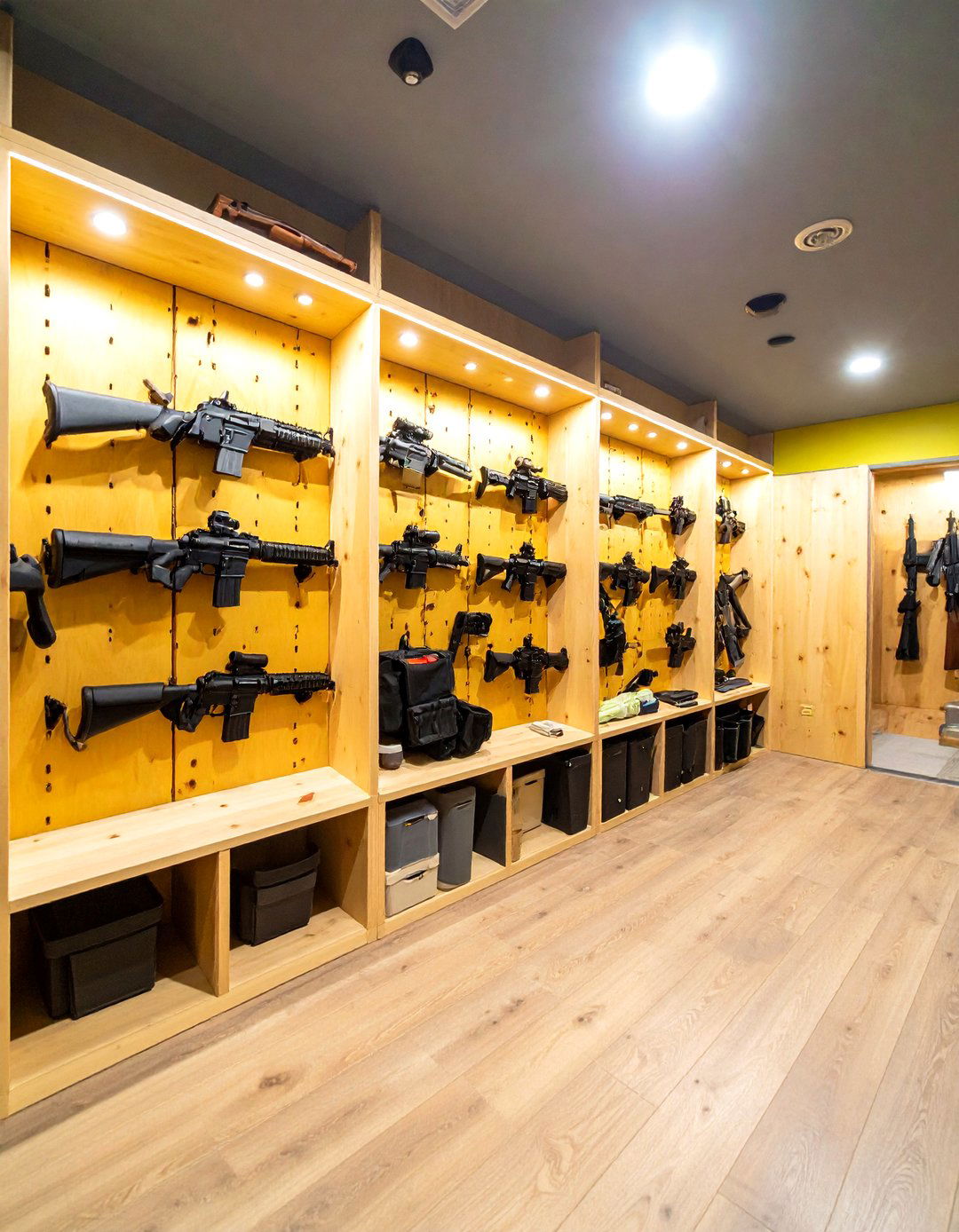
A sleek CradleGrid™ wall system instantly transforms a plain gun room into a military-inspired gallery by securing each firearm on individual saddles that adjust for length, optic height, and magazine size. SecureIt Gun Storage Unlike fixed wooden racks, the steel panels screw directly to studs, letting you reconfigure for a new carbine or a 56-inch long-rifle in minutes. Modular backers also create airflow around the wood furniture, reducing cold-spot moisture that can seed corrosion. Pair the grid with rubber-padded barrel posts to avoid scratches, and add labeled gear bins for suppressors, bipods, and slings so every accessory lands in the same visual rhythm. By anchoring storage to the wall, you free the floor for cleaning benches or a leather club chair, turning the gun room into a lounge as well as a vault.
2. Track Lighting Frames the Collection Like Art
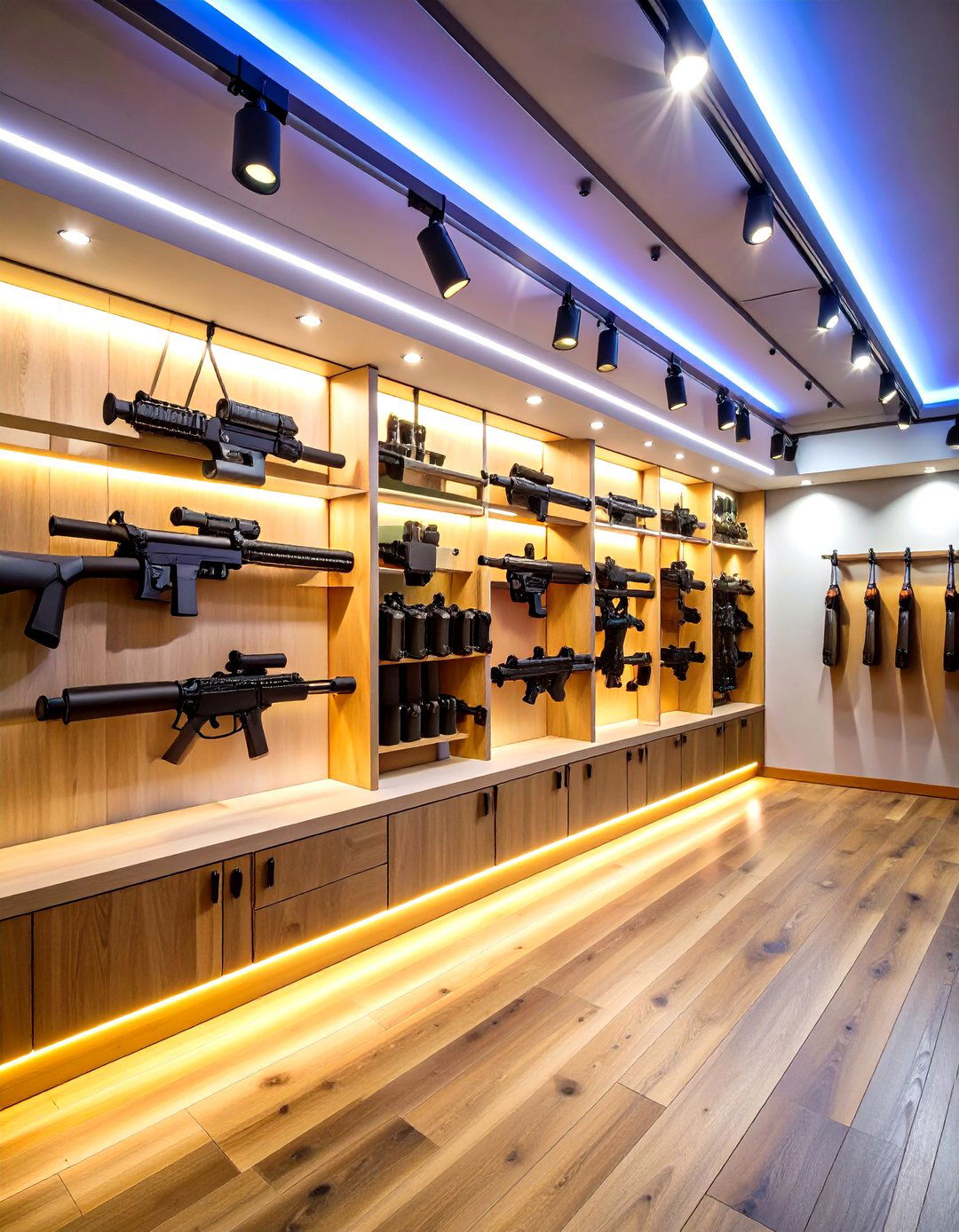
The moment visitors step in, targeted lighting should make blued steel and walnut glow. Aim adjustable track heads down each rack row so every receiver picks up a highlight without harsh reflections on scopes. LED tracks emit almost no heat, crucial for maintaining that 60-70 °F range prized by preservation experts, and dimmer switches let you drop lux levels during long storage spells to protect case-color finishes. For an extra punch, run a high-CRI strip behind the racks; bouncing indirect light off the wall emphasizes silhouettes while hiding fixtures from view. Finally, wire emergency backup LEDs so security cameras never sit in the dark during an outage.
3. Dedicated Dehumidifiers Halt Rust in Its Tracks
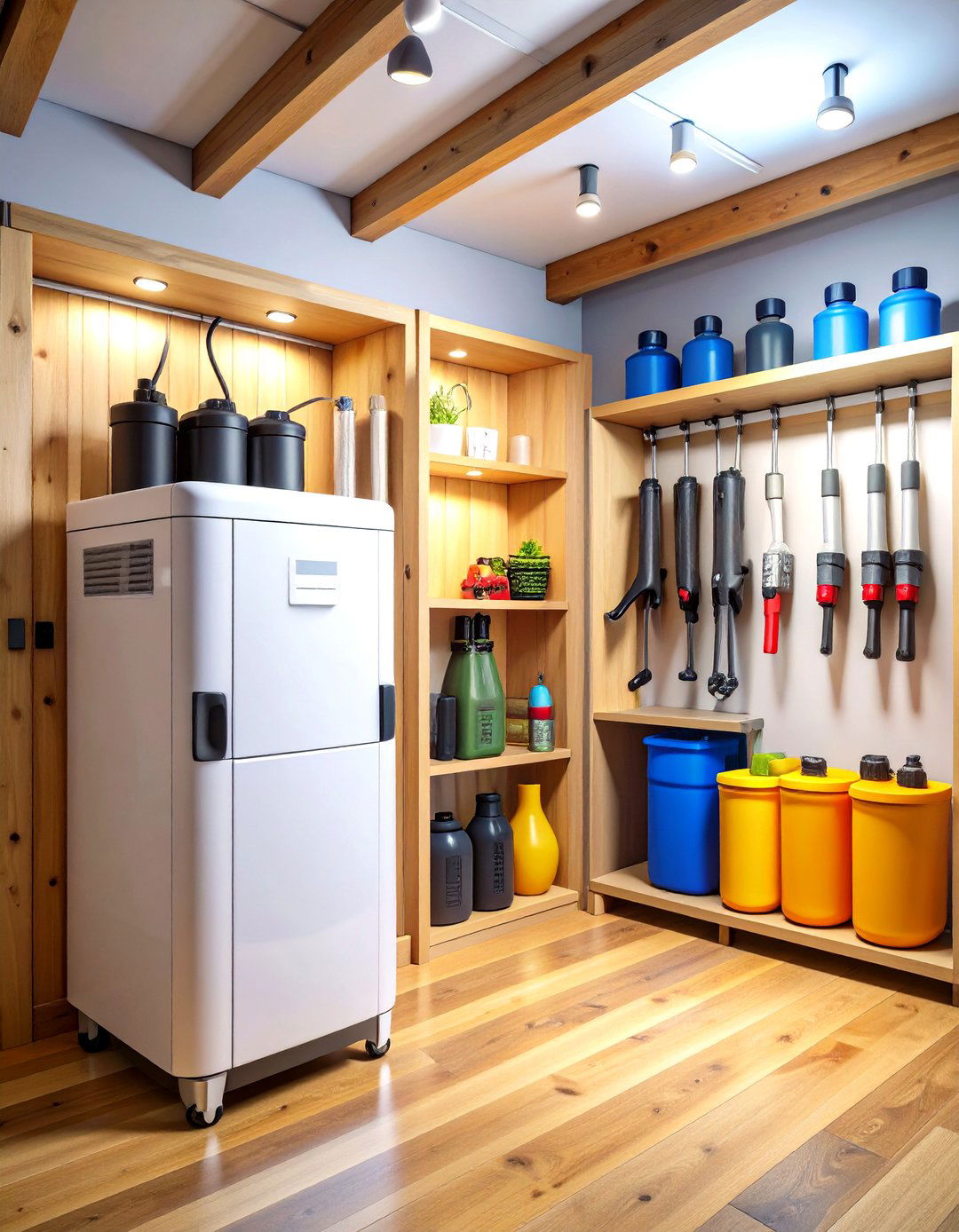
Humidity is the silent killer of cherished firearms, so a gun room deserves an appliance-grade dehumidifier with a drain line instead of a cup that overflows. Gun University Reddit Choose a model sized for at least the room’s square footage and run it to maintain 30-50 percent relative humidity—the range endorsed by industry safety guides. Liberty Safe Install a humidity sensor adjacent to the furthest corner away from the unit to verify even climate control. If the room sits below grade, add a condensate pump or gravity feed through the wall to a utility sink so you never babysit the bucket. Silica-gel canisters in smaller cabinets provide redundancy and color-changing beads give instant visual feedback when regeneration is due.
4. Vault Doors Turn a Spare Room into a Fortress
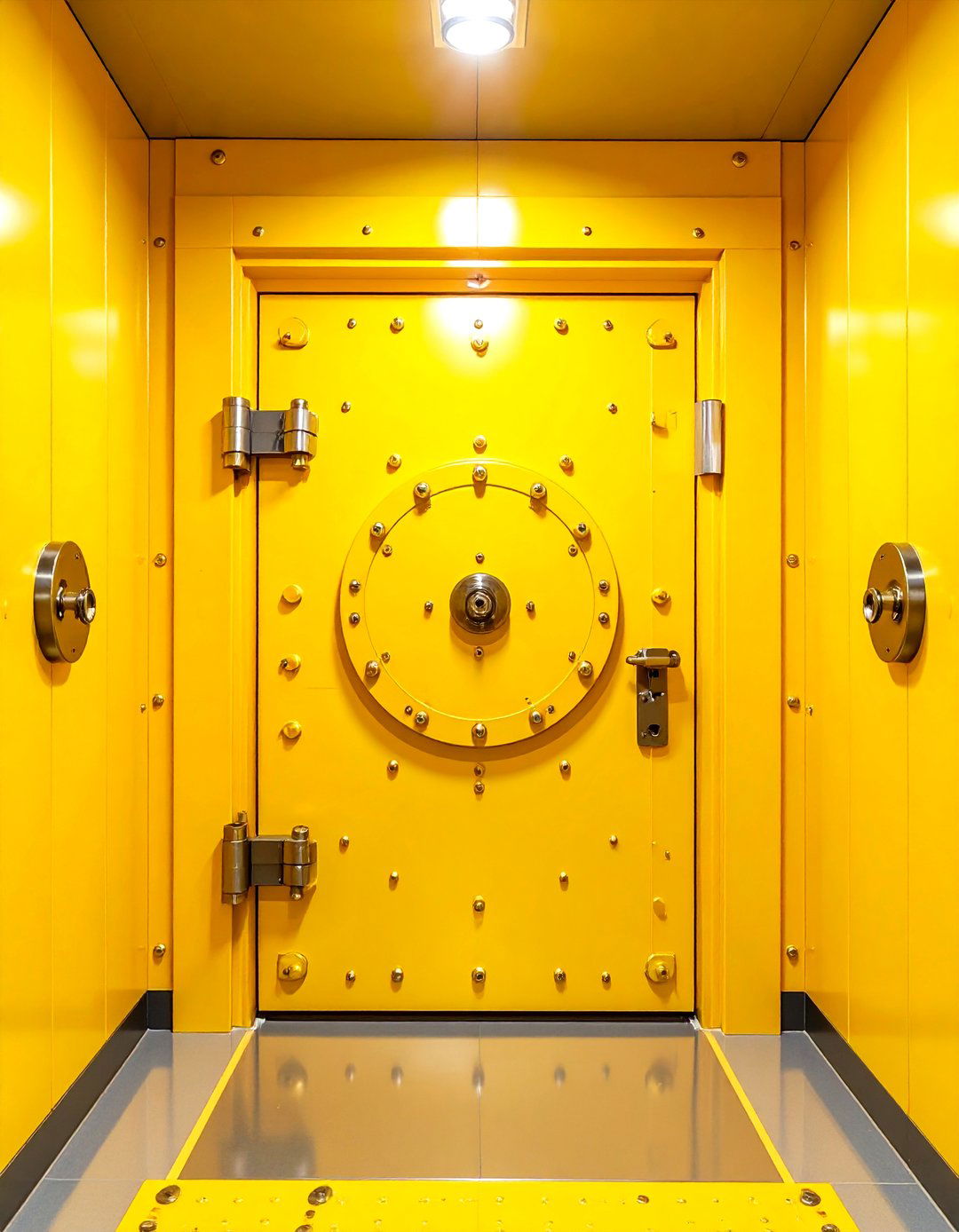
Replacing a hollow-core interior door with a purpose-built vault barrier deters thieves who would otherwise kick through drywall in seconds. Look for doors with solid steel plates, internal hinge pins, and UL-rated locks that resist manipulation. Many models ship with expandable fire seals that swell in heat to block smoke, pairing burglary resistance with a one-hour fire rating. Decide whether you prefer an inward swing for tornado shelter use or outward swing that prevents barricading. A vault door also raises the insurance ceiling on collections because adjusters recognize the security upgrade—often lowering premiums enough to offset a chunk of the install cost.
5. Fire-Rated Drywall Forms a Heat Shield
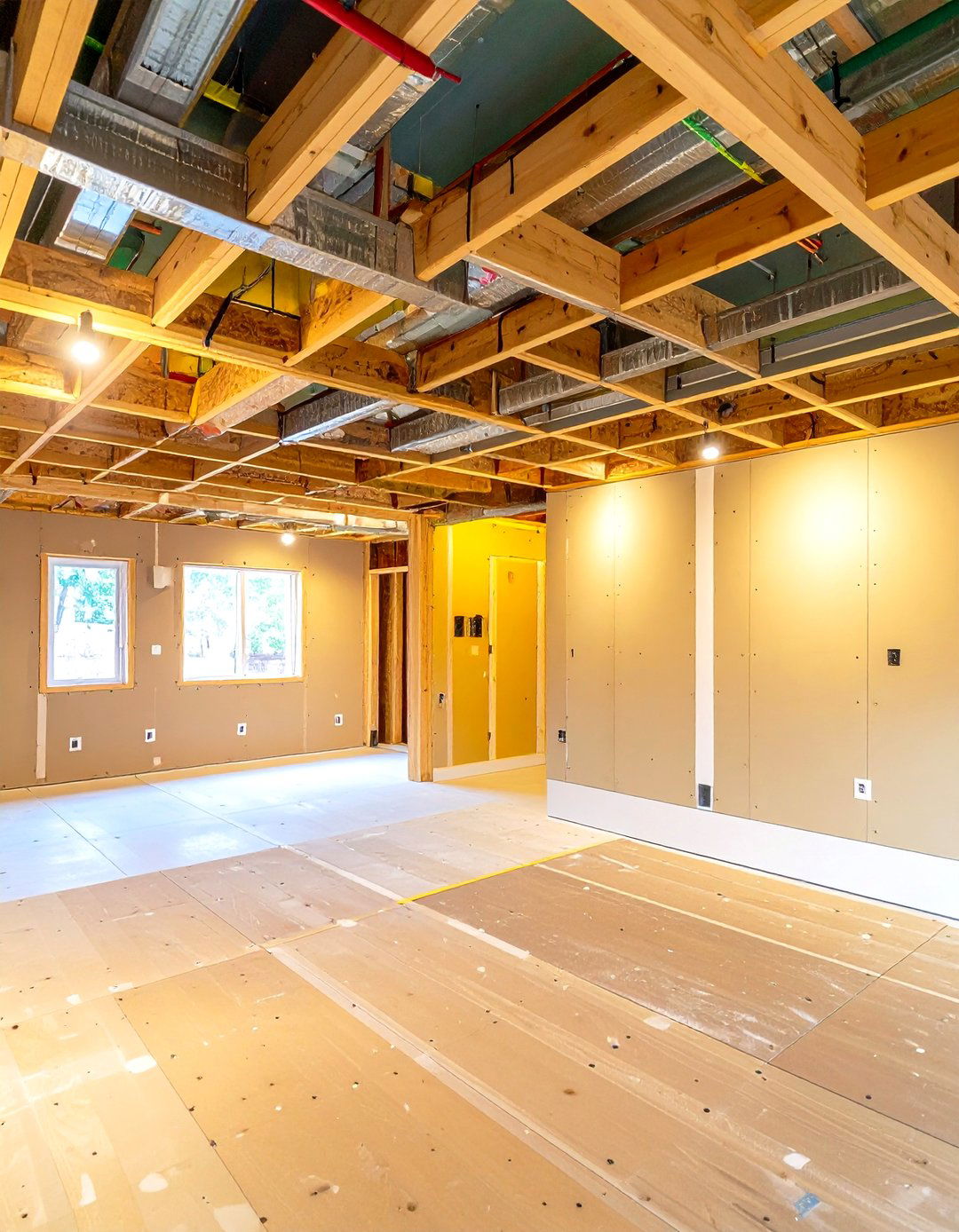
Framing the gun room with Type X or C drywall ups survivability during a house fire by buying responders precious minutes. The Spruce These gypsum boards embed glass fibers or special additives that hold structure under extreme heat, slowing structural collapse. Install at least two layers, stagger seams, and caulk penetrations with intumescent sealant used around electric boxes or HVAC chases. Because drywall alone only slows flames, pair it with concrete backer or steel studs to prevent twisting and keep gun safes anchored. Coat the final surface in light-colored paint to maximize lighting efficiency and reveal dust that encourages humidity when left unchecked.
6. Smart Vent Dampers Balance Airflow and Safety

A gun room hidden behind a vault door still needs fresh air, yet ductwork can become a fiery conduit. Install fire-rated automatic dampers that slam shut when temperatures spike, preventing flames and smoke from racing inside. Rokslide Couple those dampers with a whisper-quiet inline fan to exchange air slowly, limiting pressure differentials that might pull conditioned household air—and moisture—through frame gaps. For high-humidity regions, route the return vent near the floor where cool moist air pools, boosting dehumidifier efficiency. A charcoal filter on the intake keeps gun oil odors from drifting upstairs, preserving household harmony.
7. Hidden Entrances Add a Layer of Obscurity
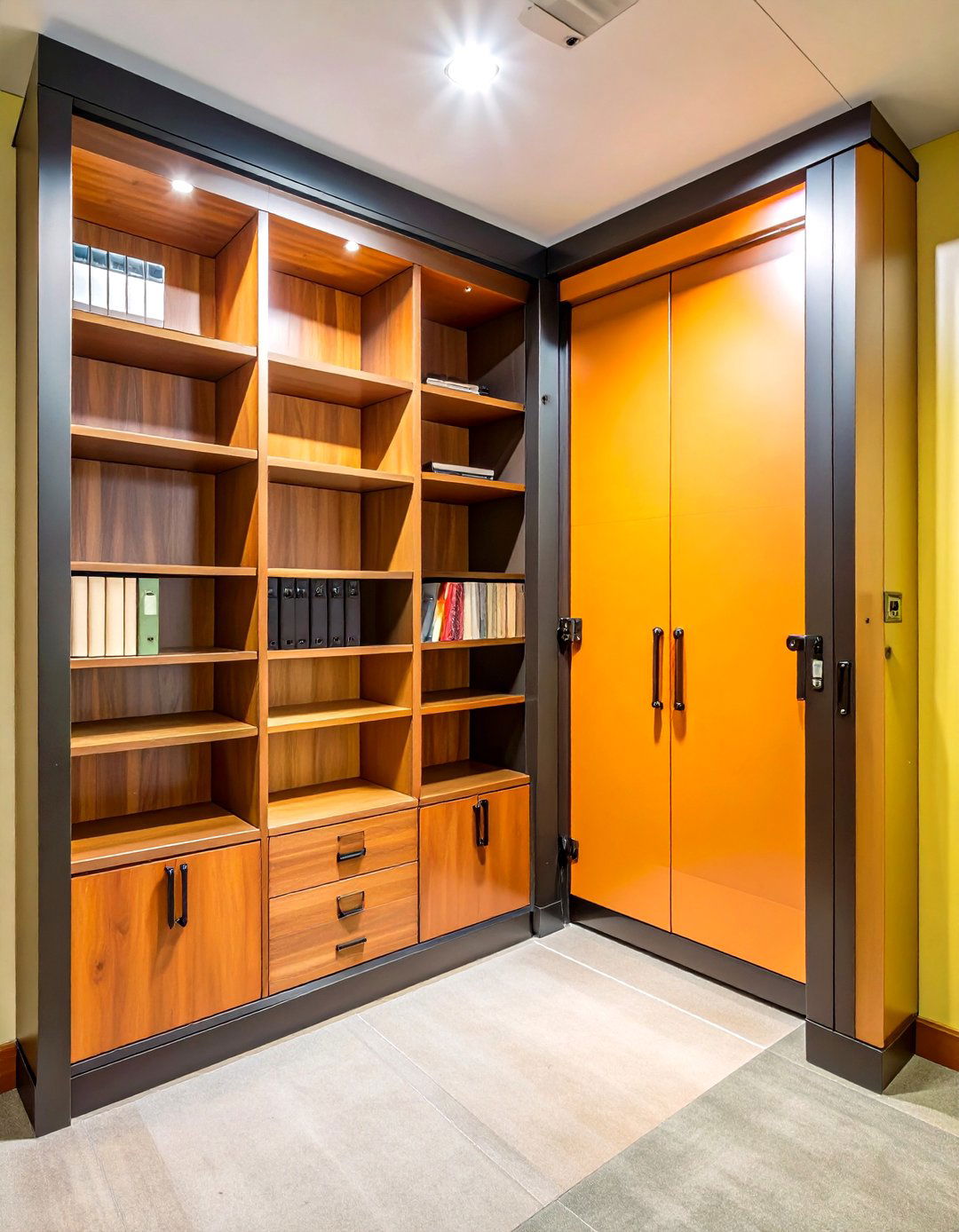
Obvious vault doors broadcast valuables; a disguised entrance cuts risk further. Builders now recess steel doors behind bookcases, sliding mirrors, or paneled walls activated by magnet-latched mullions. Homebuilding The concept blends traditional secret-room flair with modern RFID or fingerprint triggers, so only authorized family reveal the opening. Position the pivot point on a structural beam to handle the door’s weight and include a manual override so you’re never locked out by a power failure. While camouflage slows casual burglars, still anchor the underlying frame with lag screws into joists, treating secrecy as an additive defense rather than the sole barricade.
8. Biometric Locks Deliver Rapid, Single-User Access
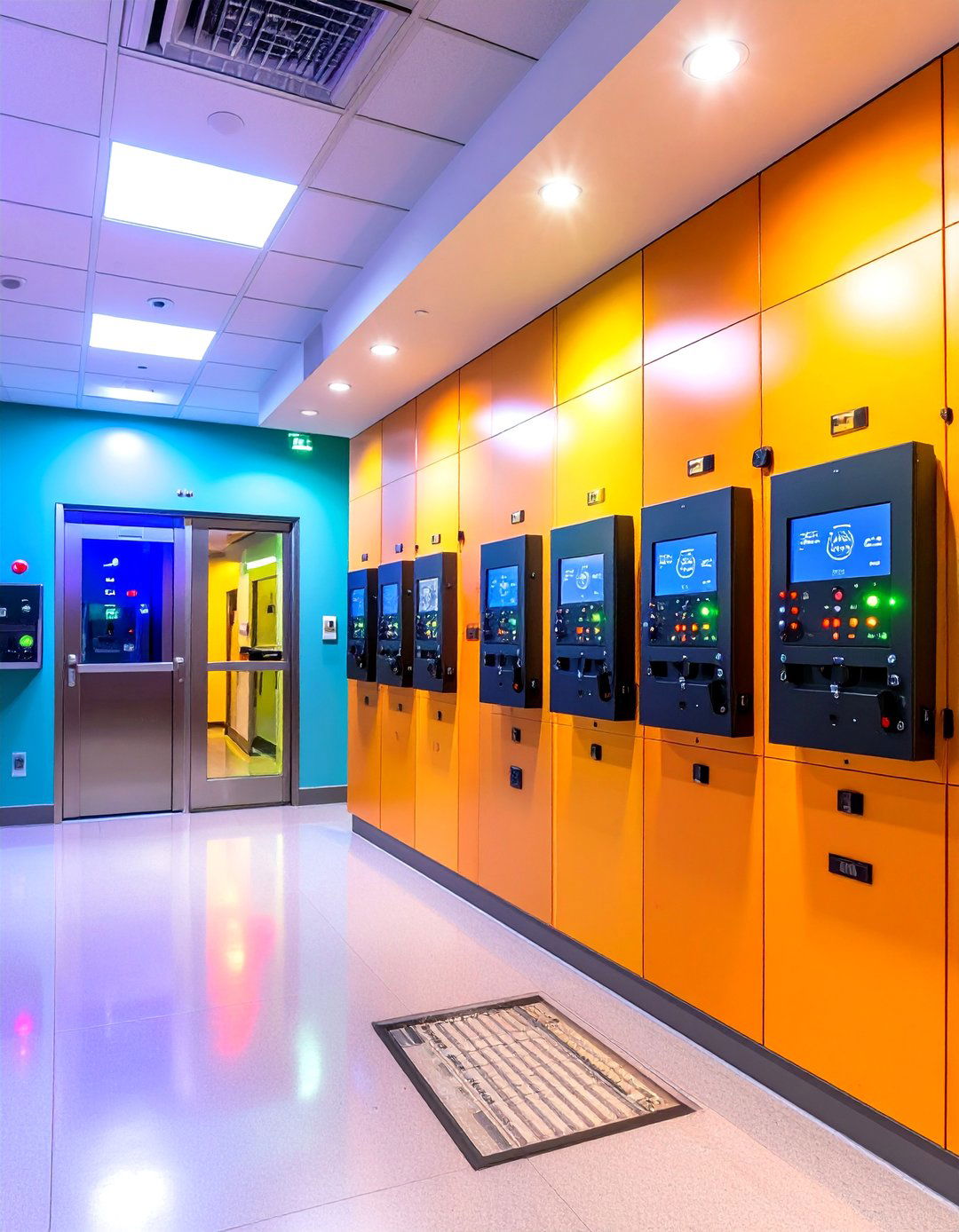
When seconds count—say, during a wildlife intrusion or home emergency—a biometric system unlocks with just a fingerprint, eliminating hunt-for-keys panic. The latest triggers integrate capacitive sensors into detachable guards that render the firearm inert until verified. Wired For room-wide control, gate the vault door with a full-hand scanner linked to a battery-backed control panel. Choose units storing multiple fingerprints so trusted adults gain entry while children remain locked out. To harden cybersecurity, disable remote-open functions and rely on local verification only. Biometric logs also create an audit trail, a useful feature when loaning range guns to guests.
9. Pegboard Ceilings Corral Hunting Accessories
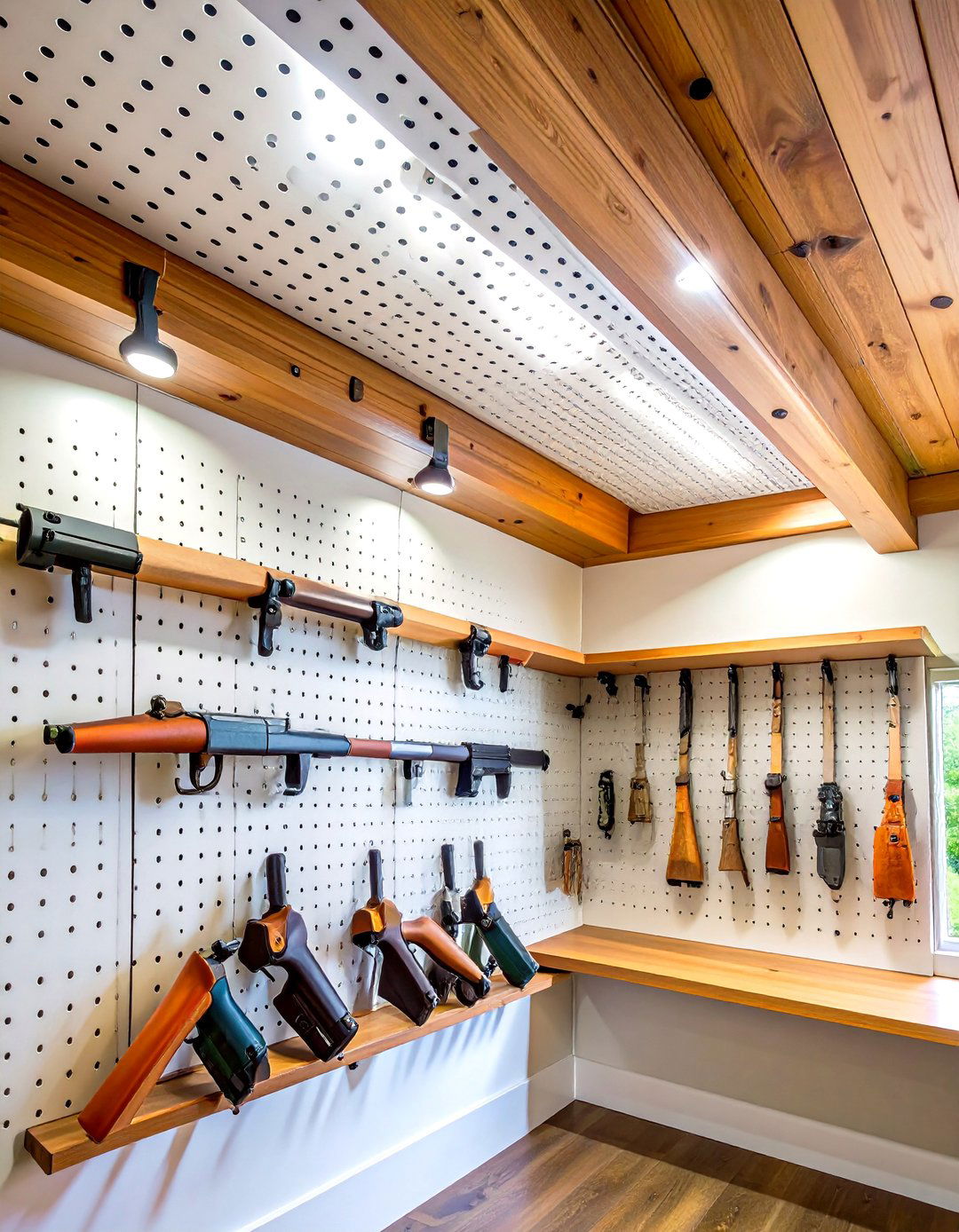
Consider using industrial pegboard overhead—not just on walls—to stow rarely used tripods, shooting sticks, or seasonal blinds. Light but strong aluminum panels attach to ceiling joists and accept rubber-tipped hooks that cradle odd-shaped gear. This over-head layout keeps floor traffic clear and reveals the entire inventory at a glance during pre-dawn hunts. For safety, use locking hook clips rated for the load and hang items above walkways, not over cleaning benches where dropping optics could shatter glass.
10. Separate Ammo Cabinets Reduce Fire Load

Storing ammunition apart from long guns minimizes total combustibles inside the main vault if fire does break out. Heavy-gauge steel cabinets with retractable bi-fold doors and multiple locking options secure bulk rounds as firmly as the firearms themselves. Mount these cupboards against an exterior masonry wall to dissipate heat faster and choose shelves with built-in lips to stop rolling boxes. Many insurers provide additional coverage discounts when ammo and explosives stand isolated, because temperature spikes within metal casings can fragment projectiles even before flame reaches the rack.
11. Workbenches Built for Gunsmithing Precision
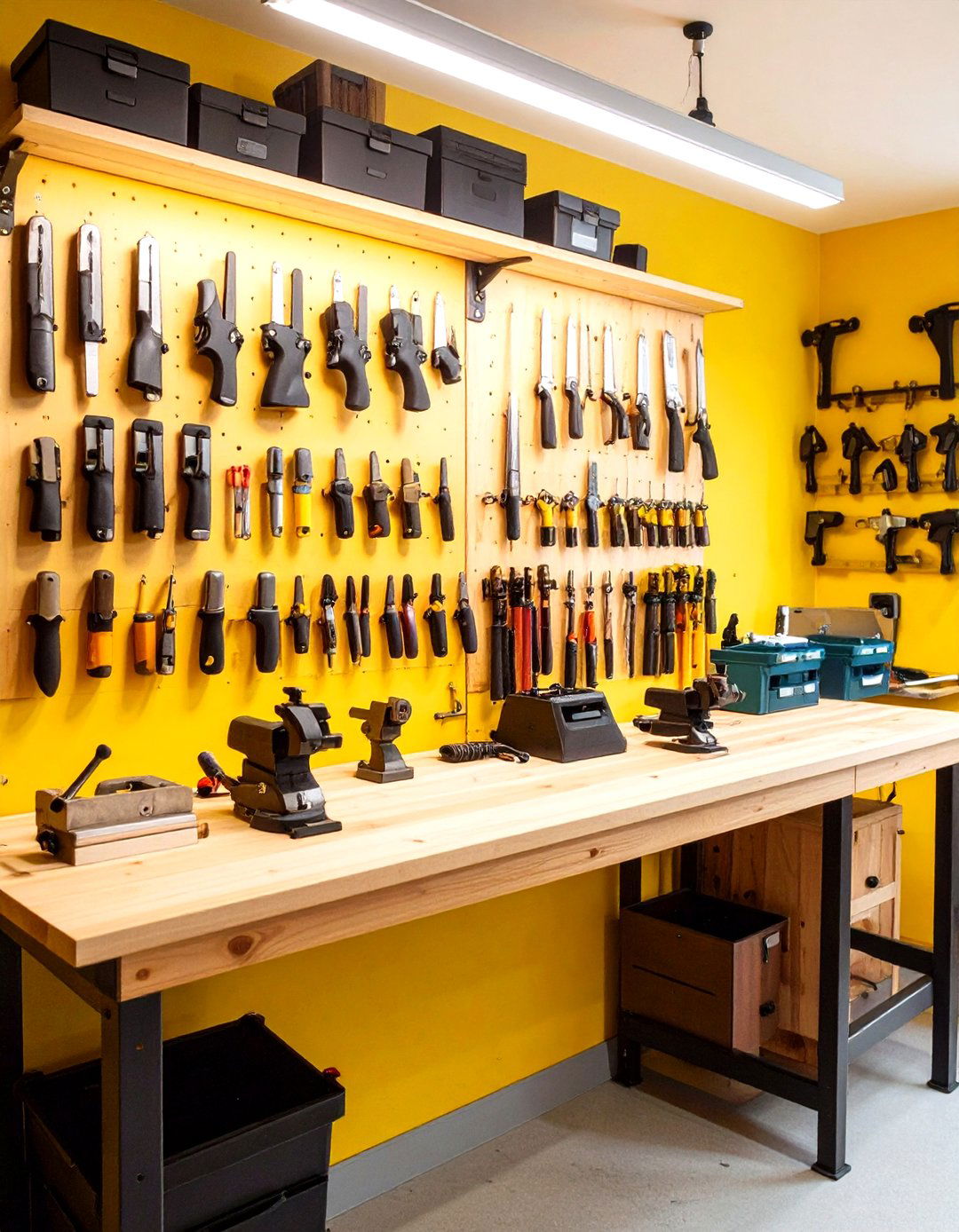
A gun room doubles as a maintenance bay when fitted with a stout wooden bench, vise, and magnetic parts trays. Standard 38-inch height benches minimize back strain while cleaning bores or fitting scopes. Pinterest Cover the surface with sacrificial Masonite so solvents don’t soak the core top, and embed T-track slots for clamping actions or barrel blocks. Add LED task lights on articulated arms for close-in work and a dense-foam mat underfoot to delay fatigue during long bedding jobs. Lockable drawers keep specialty torque drivers and headspace gauges separate from range odds and ends.
12. Acoustic Panels Tame Indoor Range Noise
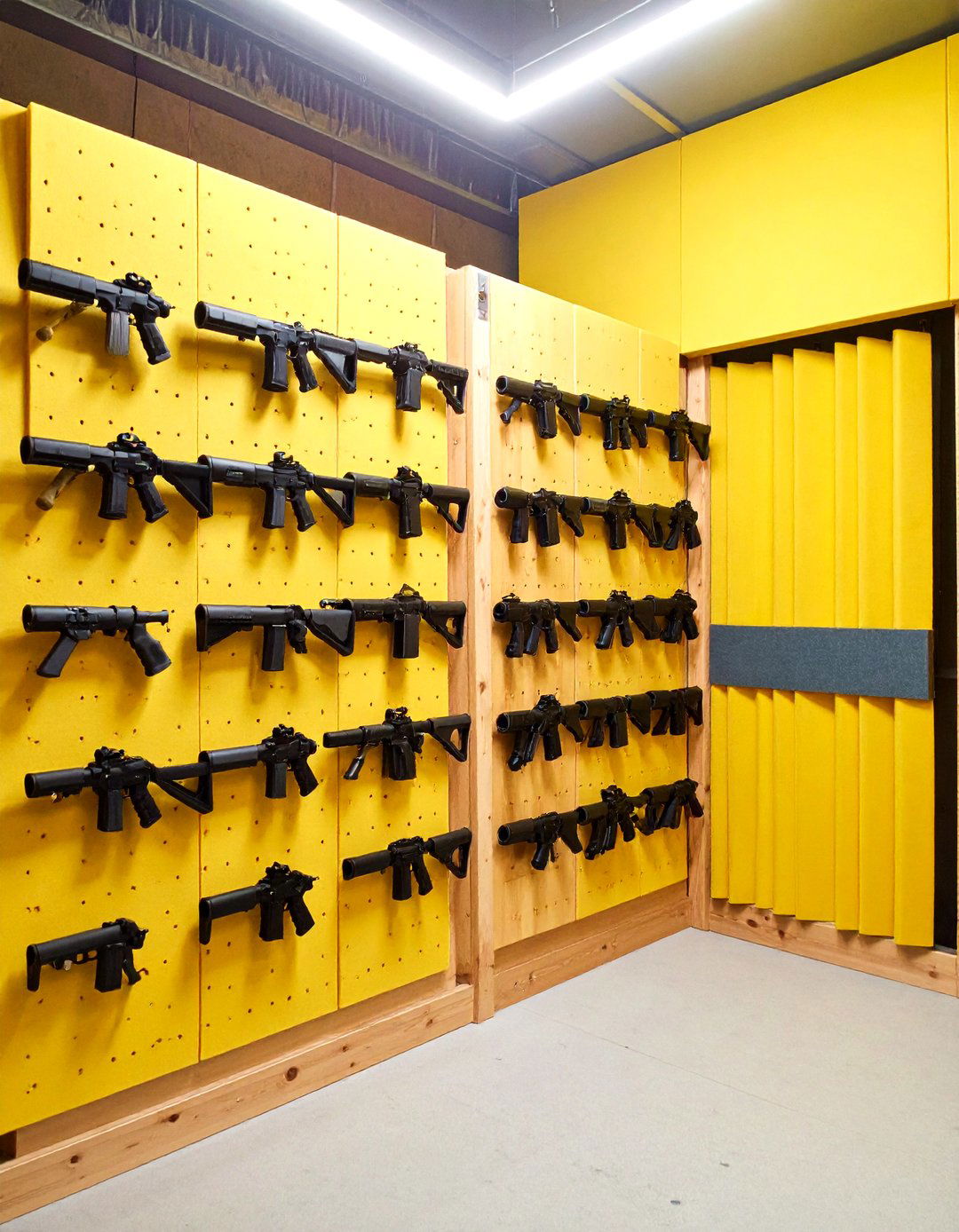
If your gun room incorporates a short practice lane or bore-sighting corner, thick acoustic foam or mineral-wool panels dampen muzzle blast that otherwise echoes through the house. A case study installing 1,000 tiles along block walls shows significant decibel drops, letting adjacent rooms stay conversational. YouTube Mount panels from ear level up, leaving a concrete kneewall for easier cleaning of powder residue. For extra comfort, hang perforated vinyl curtains on ceiling tracks so you can peel them aside when rolling safes in or out. Always match any soundproofing with a dedicated ventilation system to clear lead dust.
13. Leather Lounge Zones Invite Storytelling
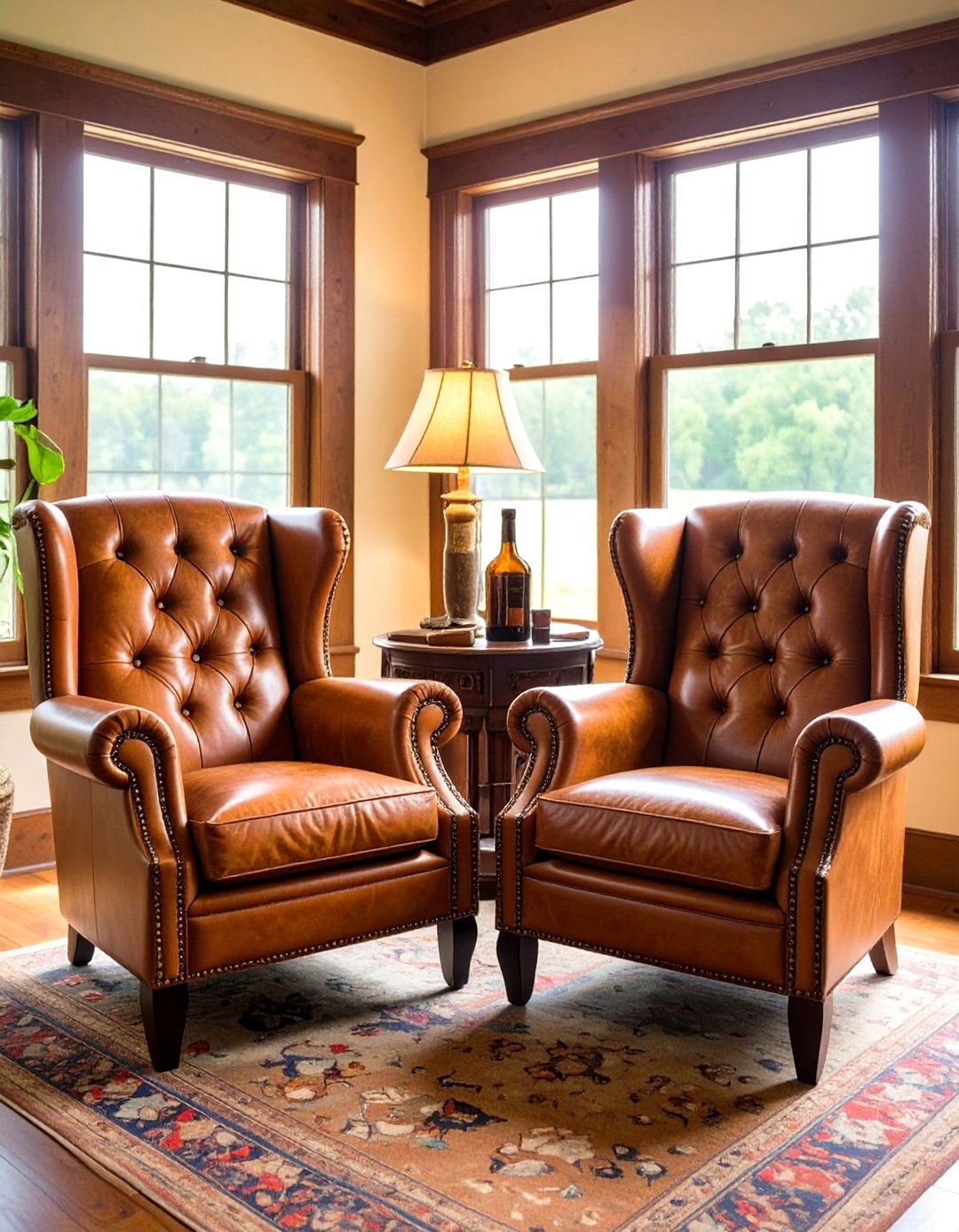
After a day afield, nothing beats recounting a stalk while surrounded by the very rifles that sealed the moment. Carve out a corner with low-slung leather club chairs, a brass reading lamp, and a scratch-resistant bottle-top table—no decanters of alcohol are needed for the vibe. Upholstery should be treated with fire-retardant spray, complement the room’s humidity targets, and resist oils from cleaning sessions. This comfort nook encourages safe handling etiquette: guns stay racked while conversation flows, lowering the temptation to pass around loaded firearms.
14. Inventory Apps Keep Collections Organized
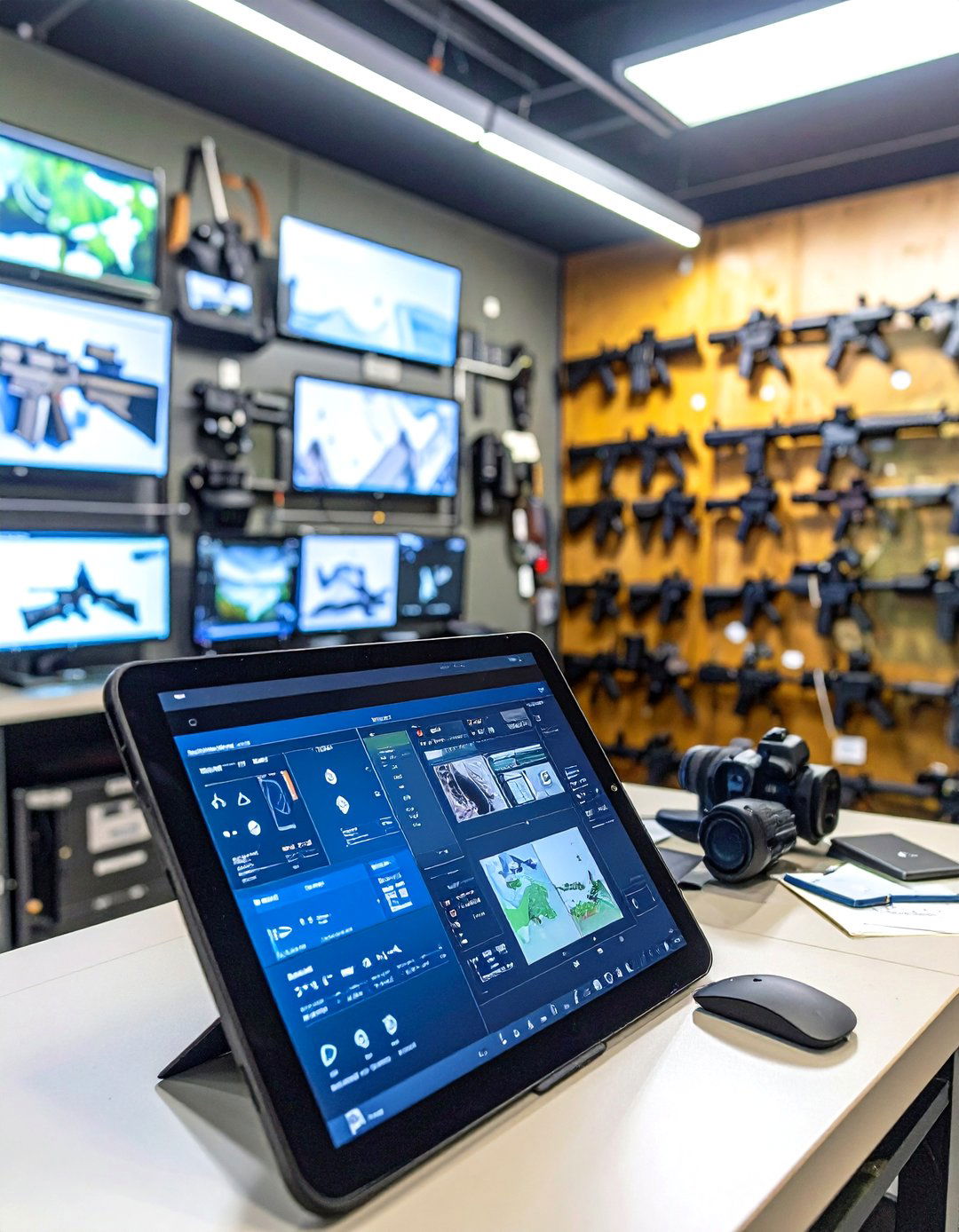
Cloud-based inventory software lets you photograph each firearm, log serial numbers, and store purchase records for insurance within an encrypted database. Some programs sync smart tags that mount inside the trigger guard, showing at a glance if a gun is absent. Regular scans highlight maintenance intervals or missing gear, ensuring accountability when multiple family members borrow rifles. Schedule the app to ping quarterly reminders to wipe down stainless barrels and refit moisture absorbers before seasonal storage.
15. Power-Failure Backups Protect Critical Systems

Install an uninterruptible power supply (UPS) dedicated to the dehumidifier, alarm panel, and CCTV DVR so climate and security never blink during storms. Choose a unit rated for at least 90 minutes to cover typical grid outages and set the UPS to email you if battery capacity falls below 30 percent. When sizing loads, remember LED lighting draws minimal juice, allowing priority to climate hardware that prevents condensation spikes which can occur in less than an hour in humid climates.
16. Moveable Steel Racks Future-Proof the Layout
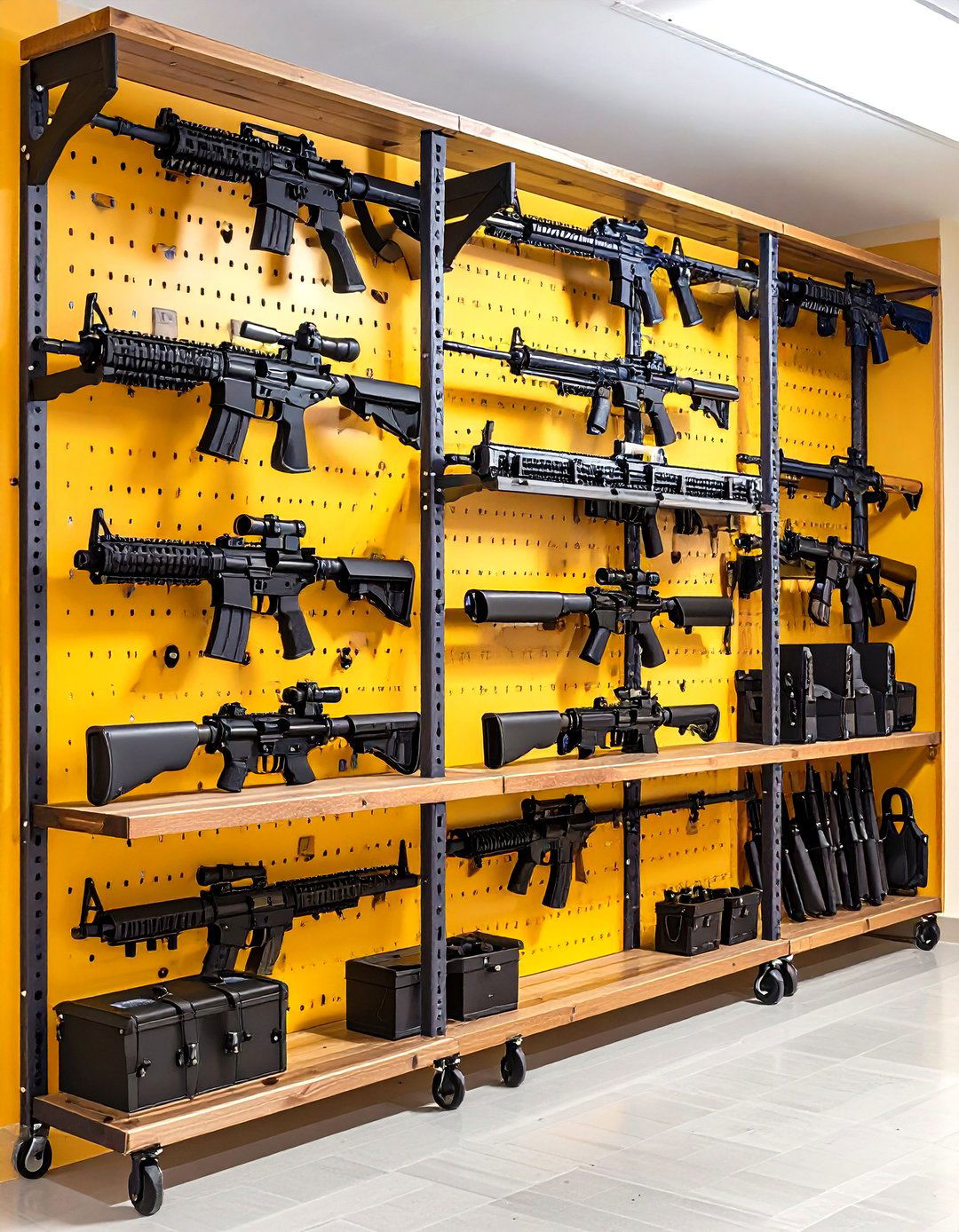
Gun collections evolve—today’s scatterguns might give way to precision chassis rifles tomorrow. Free-standing modular racks on locking casters let you slide storage into new patterns without unbolting from studs. Look for powder-coated steel frames with adjustable barrel saddles akin to wall grids, ensuring uniform padded contact points. Add cross-brace bars so full racks roll without flexing, and verify casters have rubberized wheels to preserve epoxy floors. This adaptability makes the gun room responsive to shifting passions, estate acquisitions, or even downsizing ahead of a move.
17. Climate-Zoned Cabinets Preserve Collectible Wood
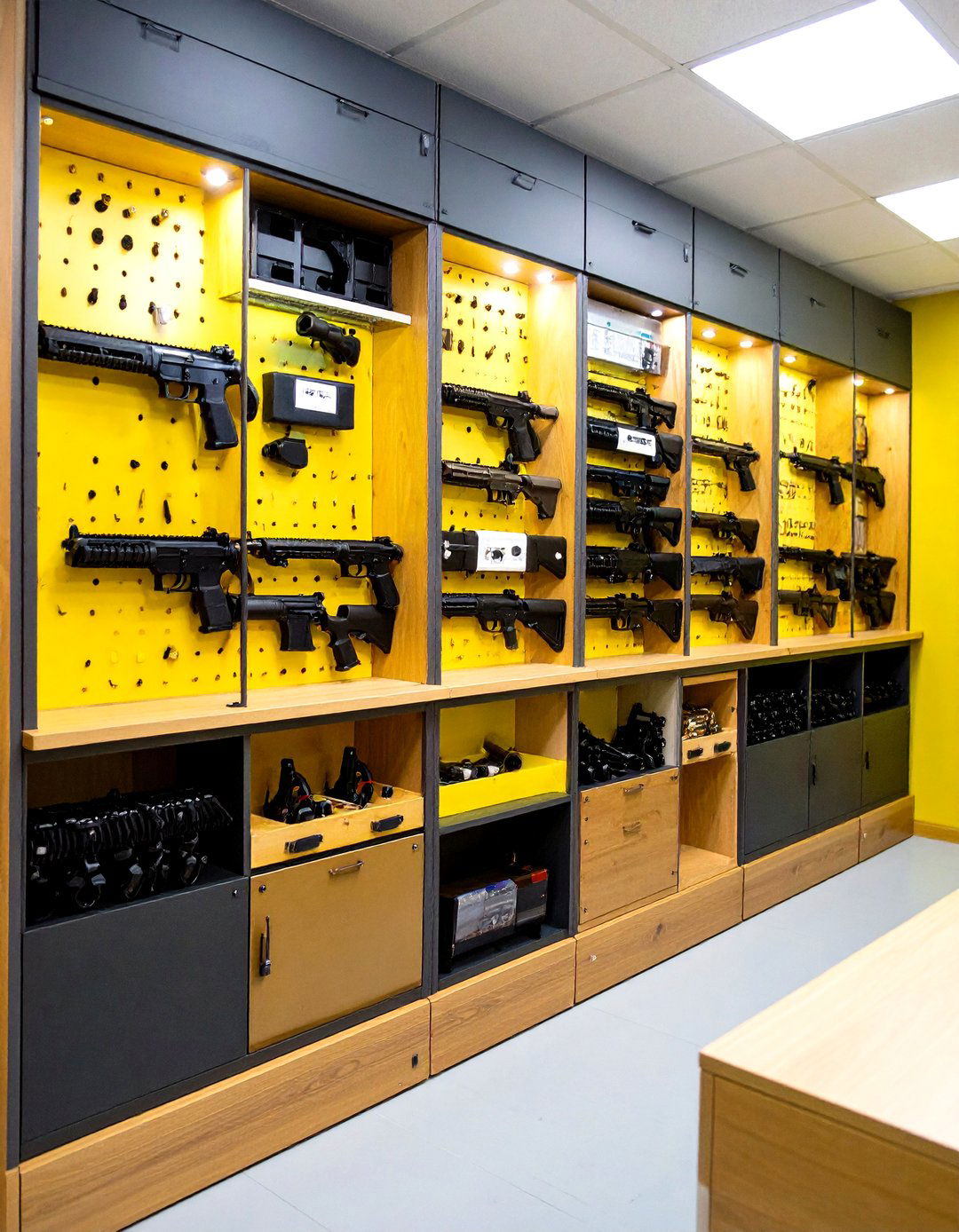
Rare shotguns with delicate French walnut benefit from micro-environments separate from the main air volume. Tall cabinets fitted with thermostatic heating rods raise the local temperature a few degrees, dropping relative humidity without altering the room’s comfort level. Mix in rechargeable silica boxes for responsive moisture snatching and stick-on tilt indicators to catch any accidental door slams that could jar fine checkering.
18. Concrete Floors with Epoxy Finish Resist Solvents
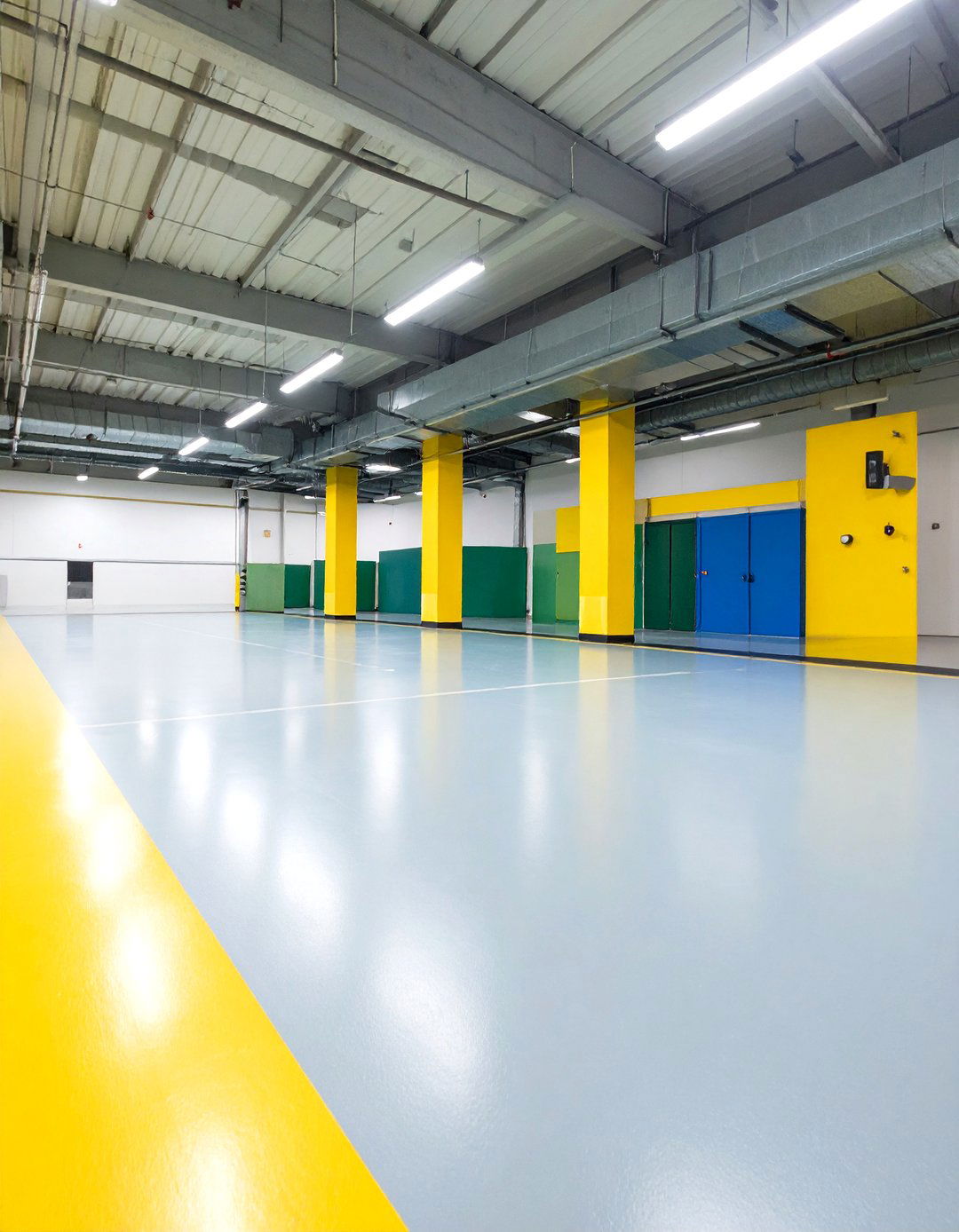
Solvent spills eat into porous concrete, releasing odors and staining boots. Sealing the floor with a light-colored epoxy coat provides a chemical-resistant surface that wipes clean, reflects overhead lighting, and reveals dropped pins instantly. Broadcast non-slip flakes into the final coat so footing remains sure when oil mist lands. Before pouring epoxy, saw-cut expansion joints and fill with flexible polyurethane so temperature swings never crack the finish under the weight of a fully loaded safe.
19. Tornado-Rated Safe Rooms Double as Ultimate Vaults
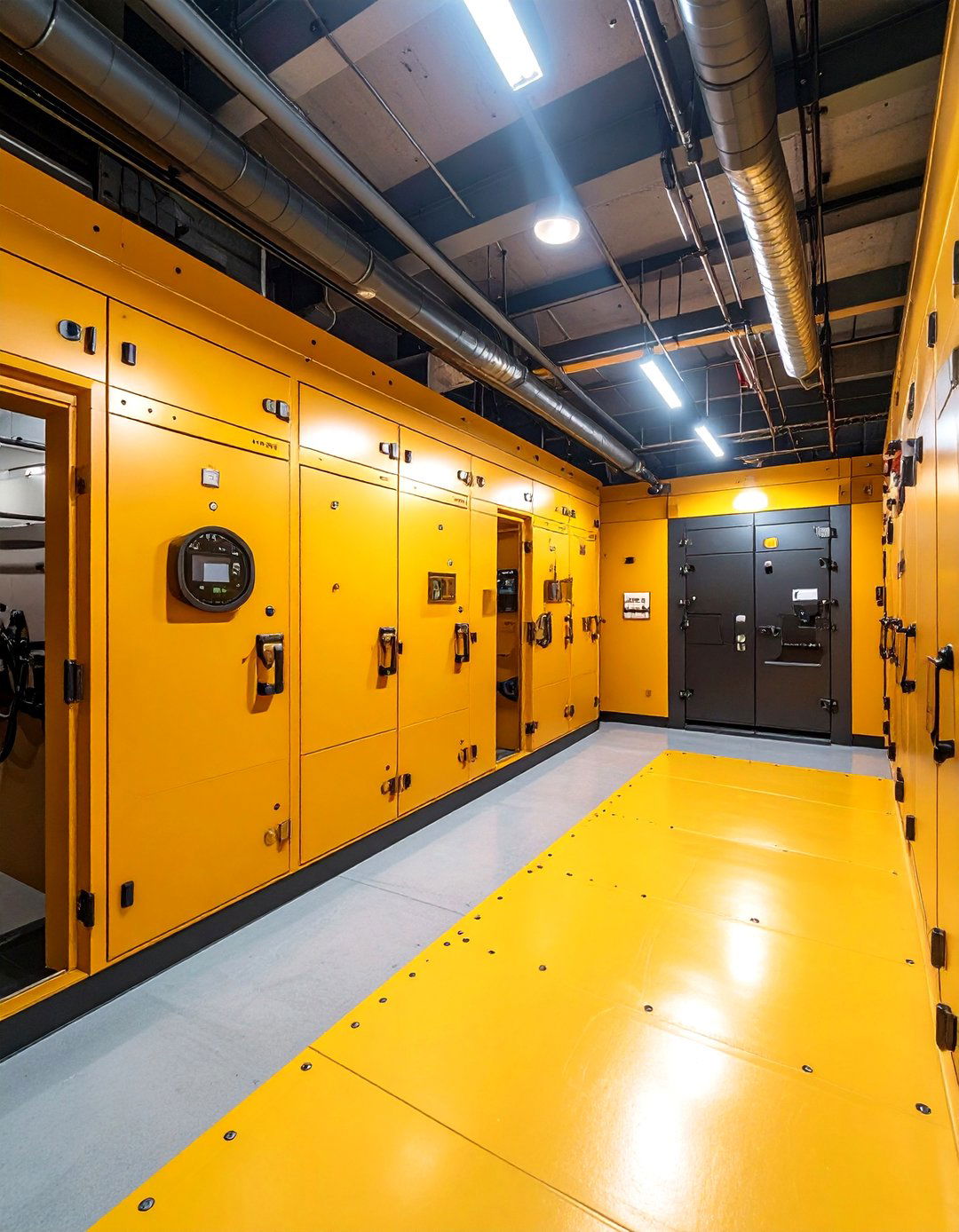
Some manufacturers build FEMA-rated storm shelters from ¼-inch steel and 6000-degree concrete that simultaneously defend firearms and families from high-wind debris. Integrating one in a basement corner stacks benefits: a hardened space anchored to the slab for security, ventilation openings sized per occupant code, and pre-drilled interior flanges for CradleGrid panels. These dual-purpose rooms often qualify for state disaster-mitigation rebates, trimming costs while guaranteeing top-tier protection.
20. Step-Through Layouts Improve Firearm Handling Flow
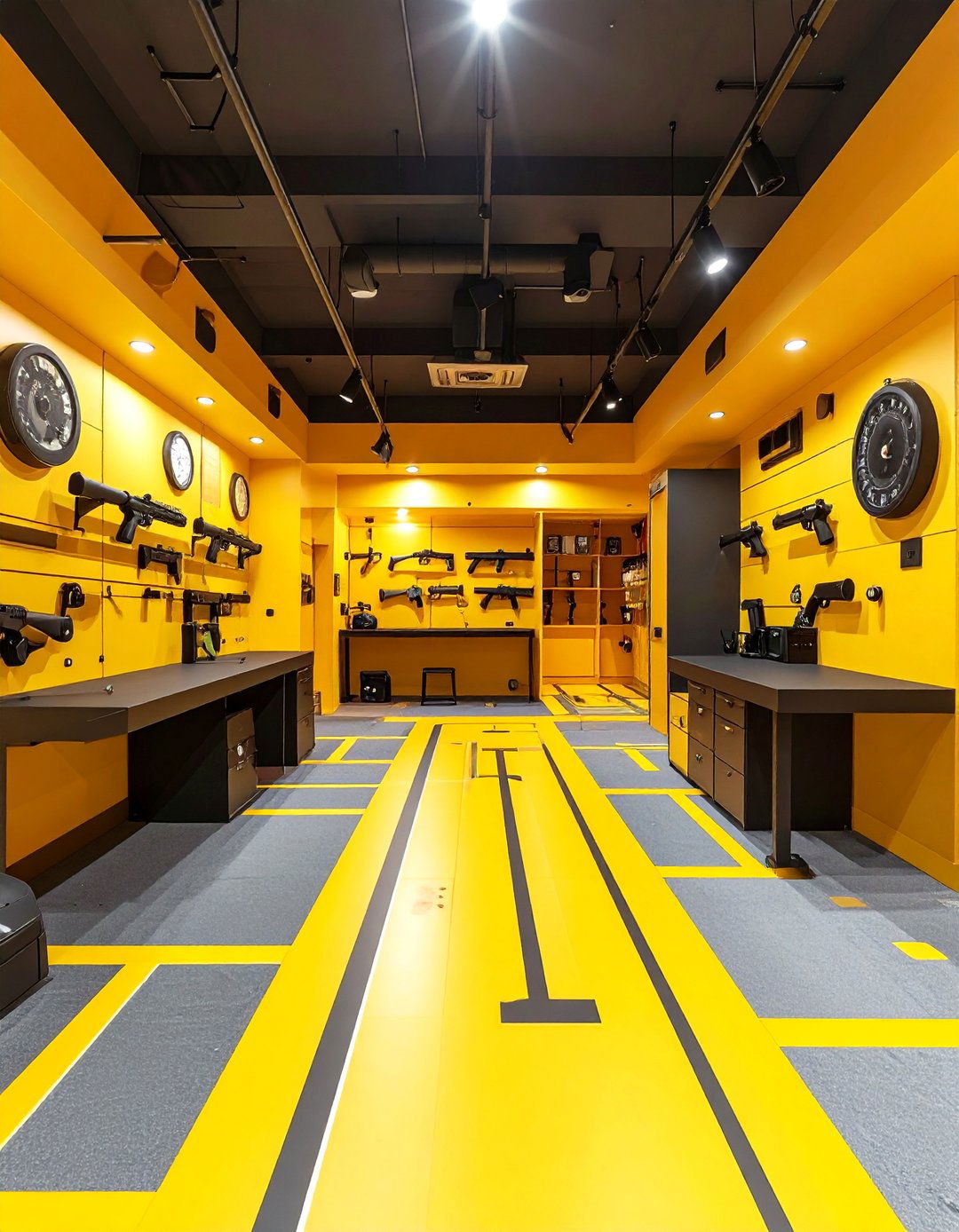
Plan traffic like a museum: designate a landing zone where guns move from rack to bench to cleaning cradle in one clockwise loop, minimizing backtracks that could cause muzzle tangles. Keep ammo cabinets opposite the vault door to separate loading activity from arrivals. Mark a yellow safety line on the floor in front of the racks; crossing it demands a muzzle-down, action-open posture. When several enthusiasts share the room, this visual choreography enforces tidy, predictable motion that dramatically reduces accidental bumping or negligent handling.
Conclusion:
Designing a high-function gun room means orchestrating layered defenses—vault doors, hidden entrances, biometric locks—around meticulous environmental control and ergonomic workspace. Modular walls showcase the collection while dehumidifiers, fire-rated drywall, and smart dampers guard against rust and catastrophe, ensuring heirloom pieces outlast generations. Lighting, seating, and sound treatment elevate the room from mere storage to a storytelling sanctuary, and inventory apps plus UPS backups bring 21st-century precision to traditional stewardship. Apply these ideas in any combination and your firearms will rest secure, pristine, and ready whenever duty or adventure calls.


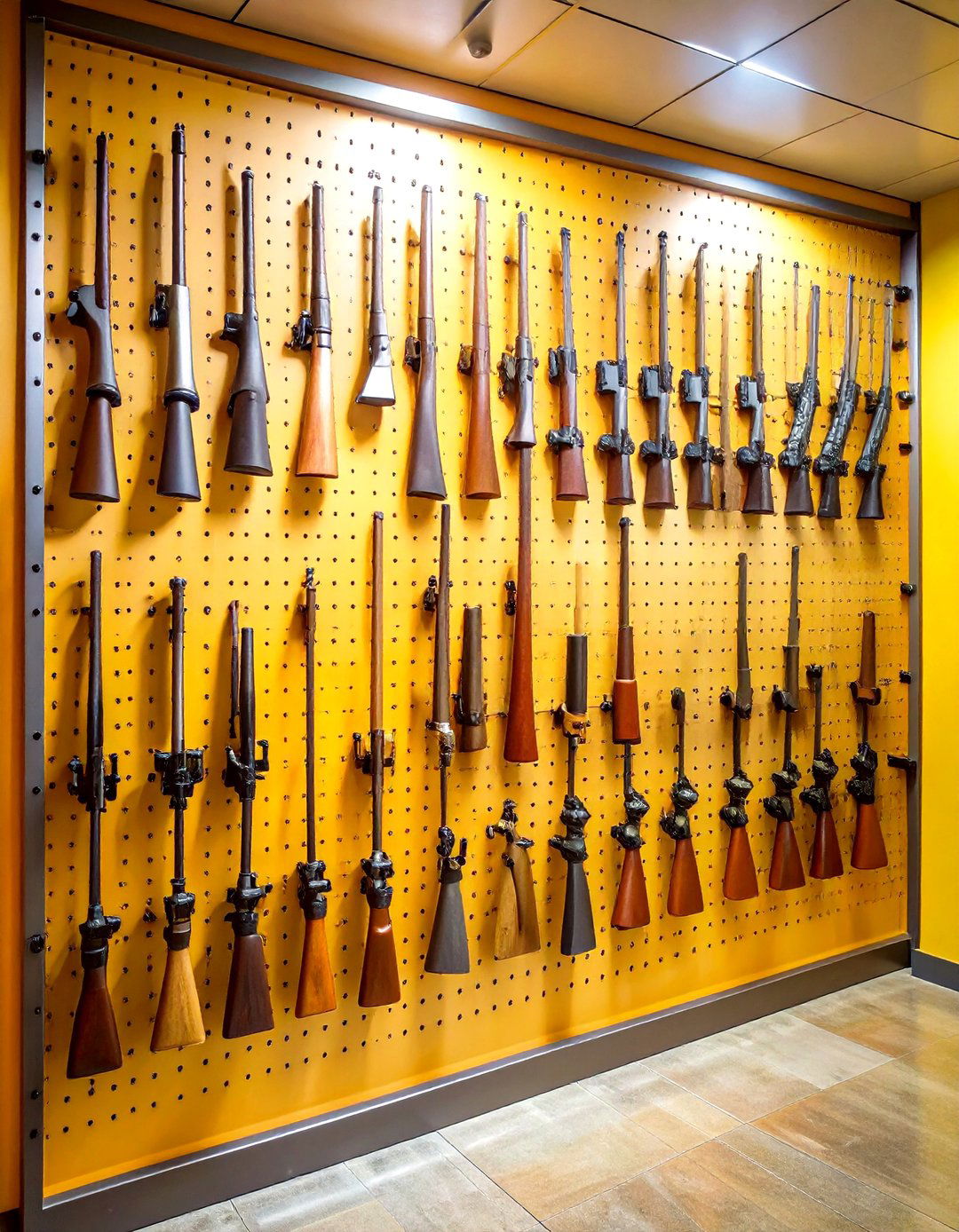
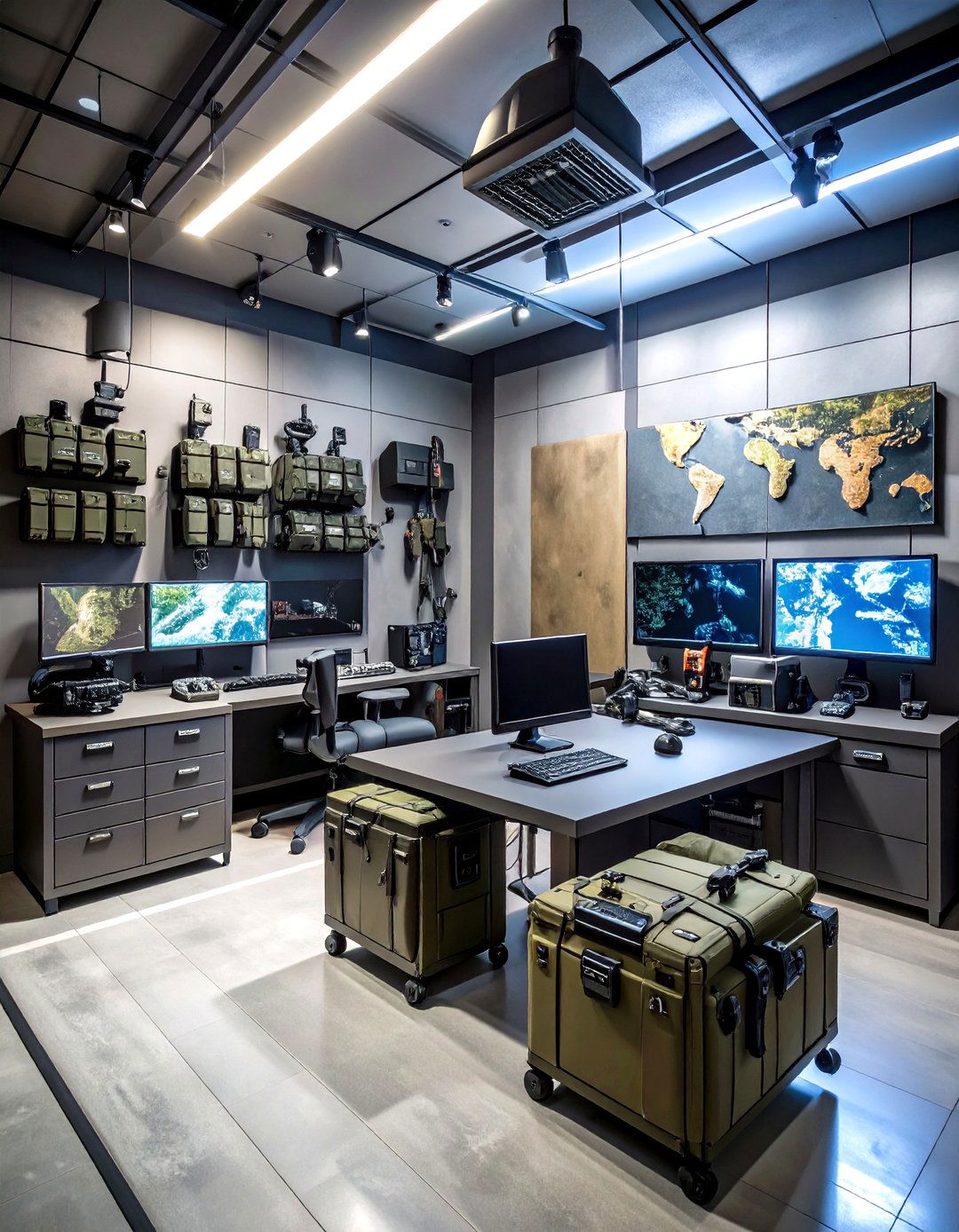
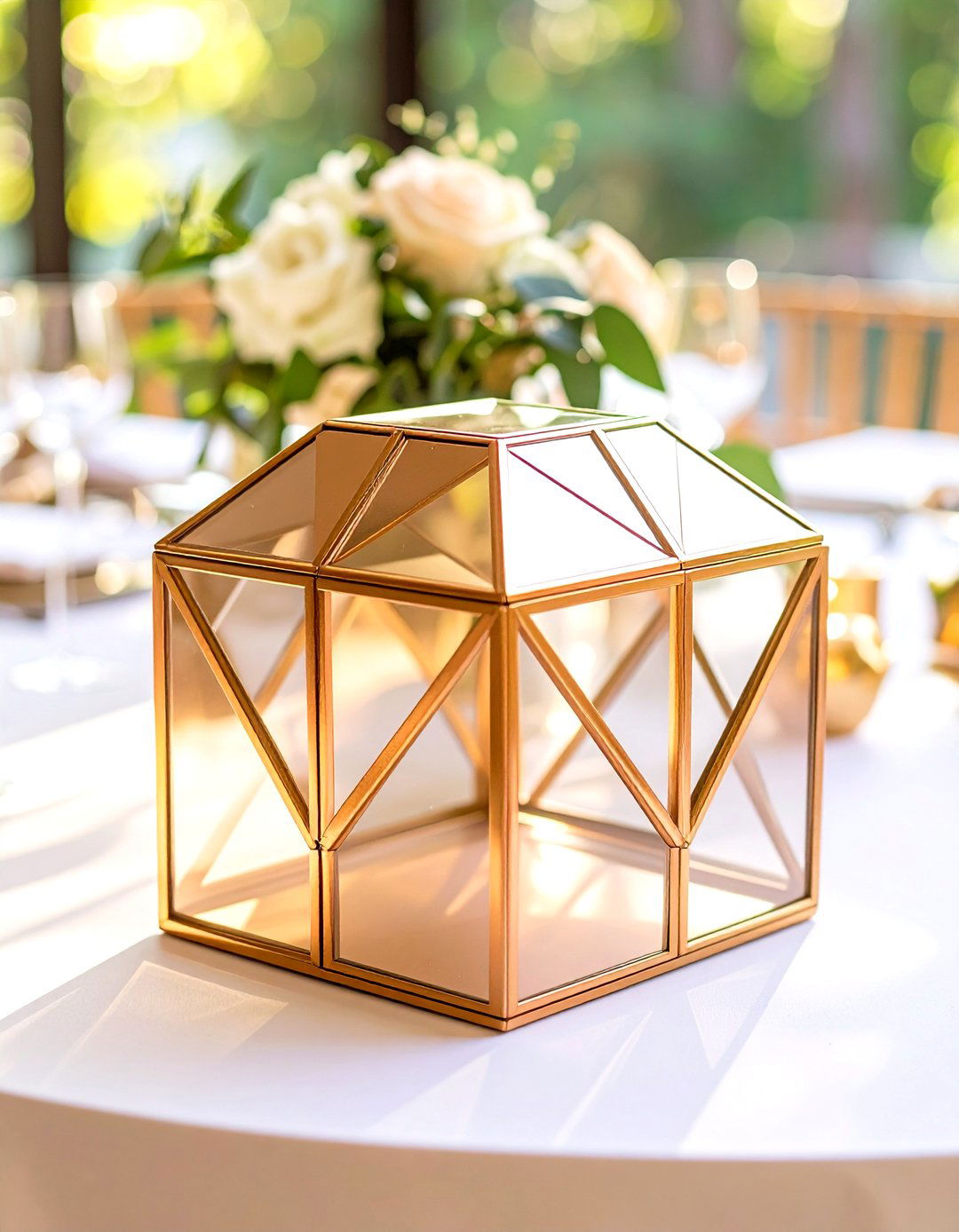

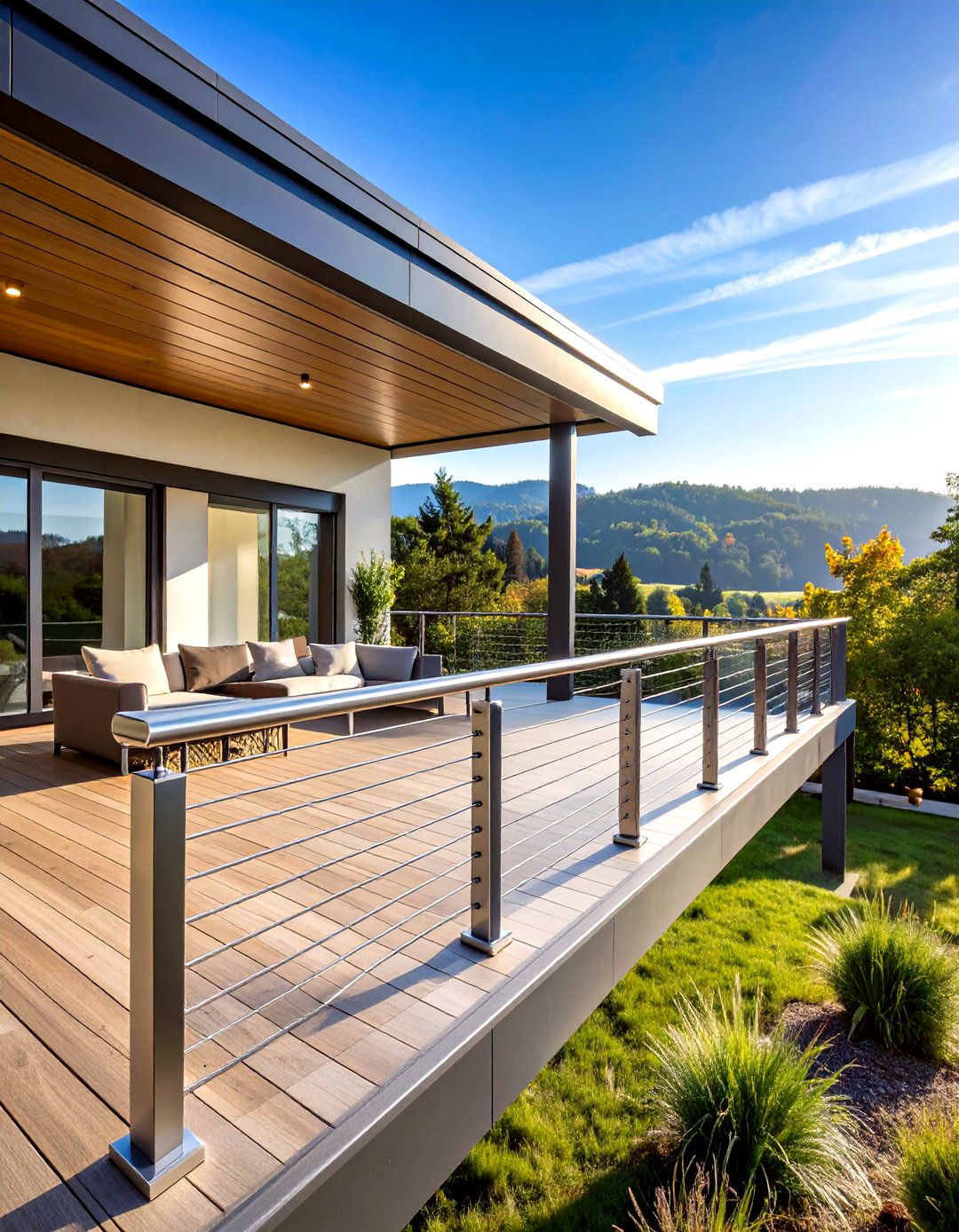
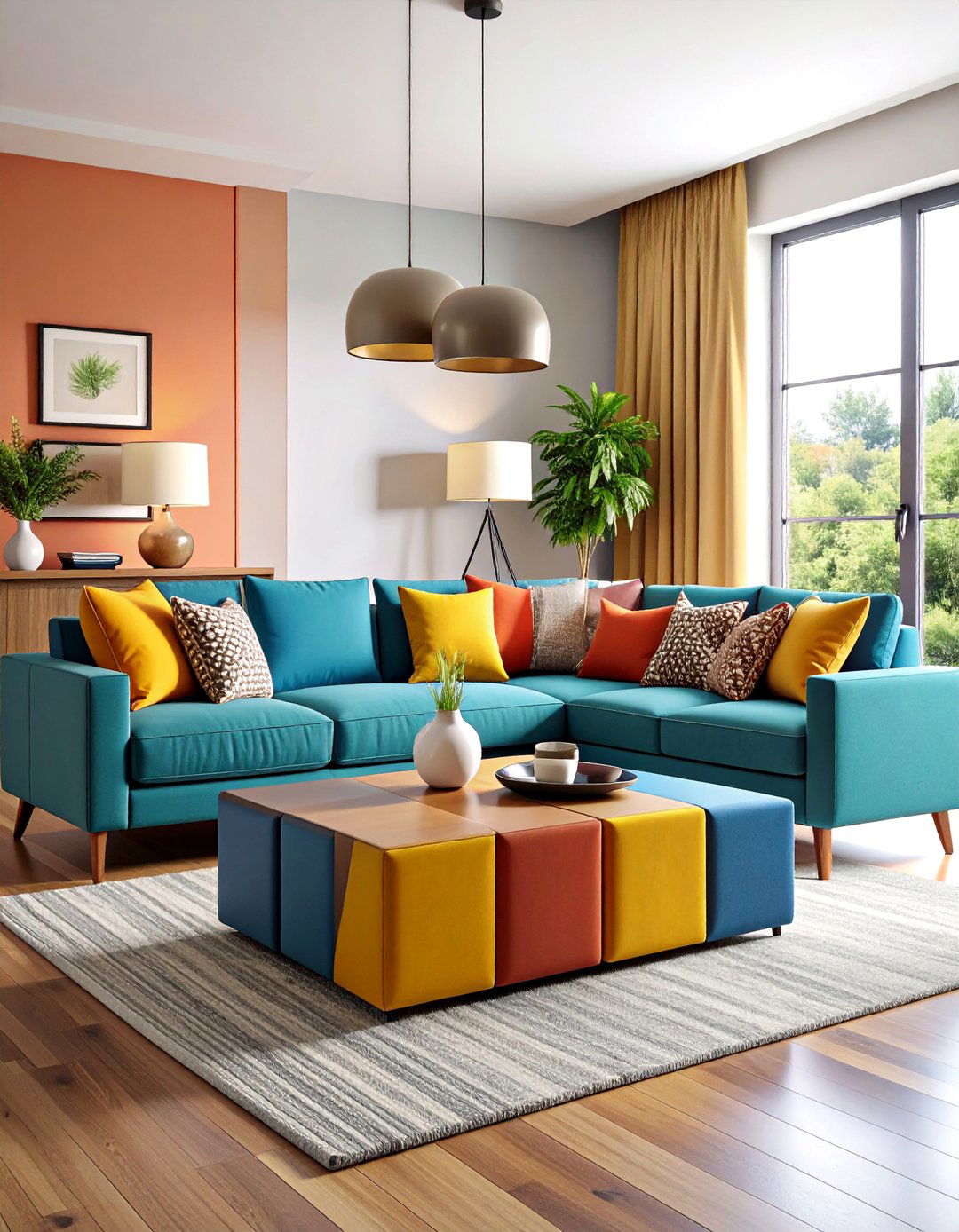
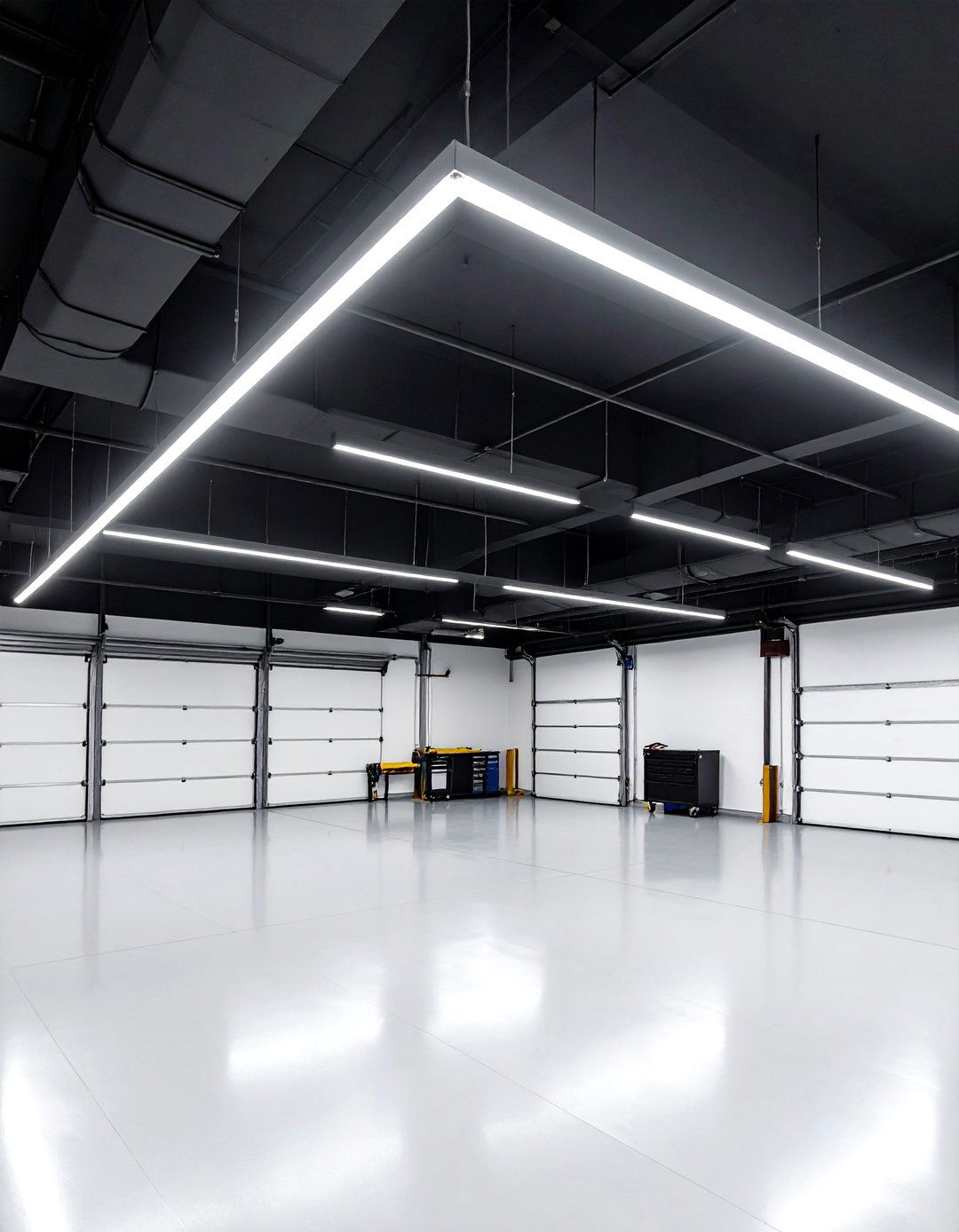
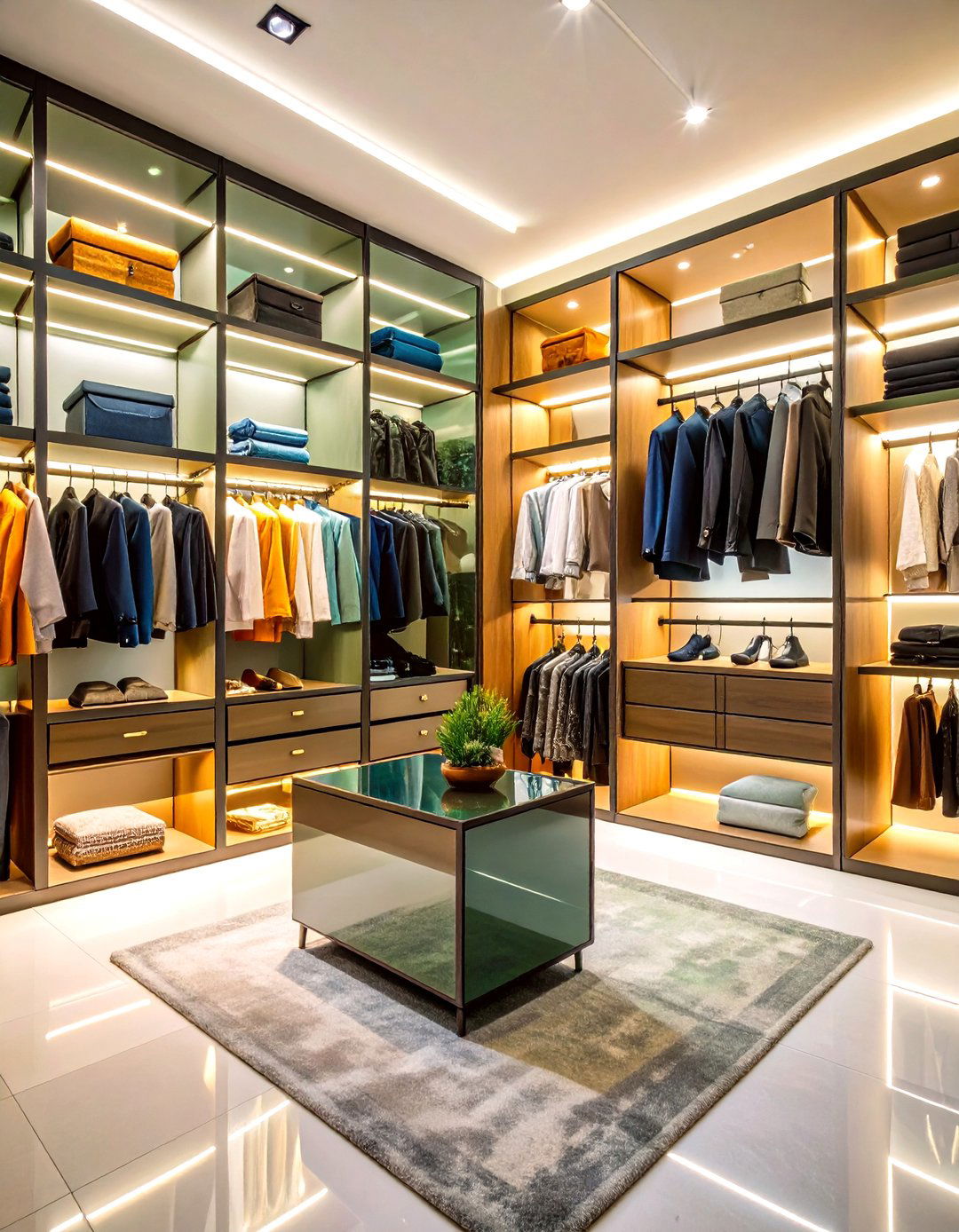
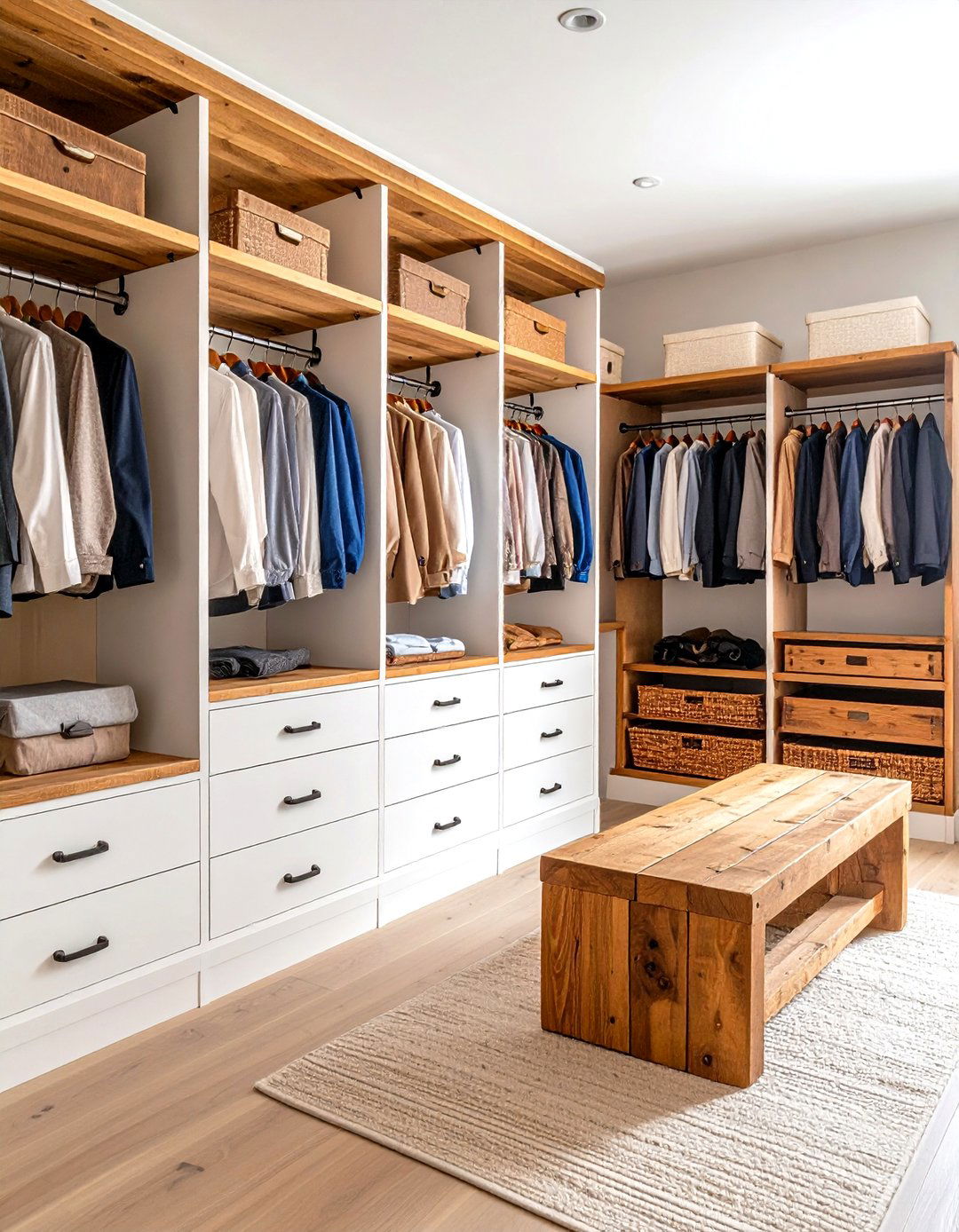
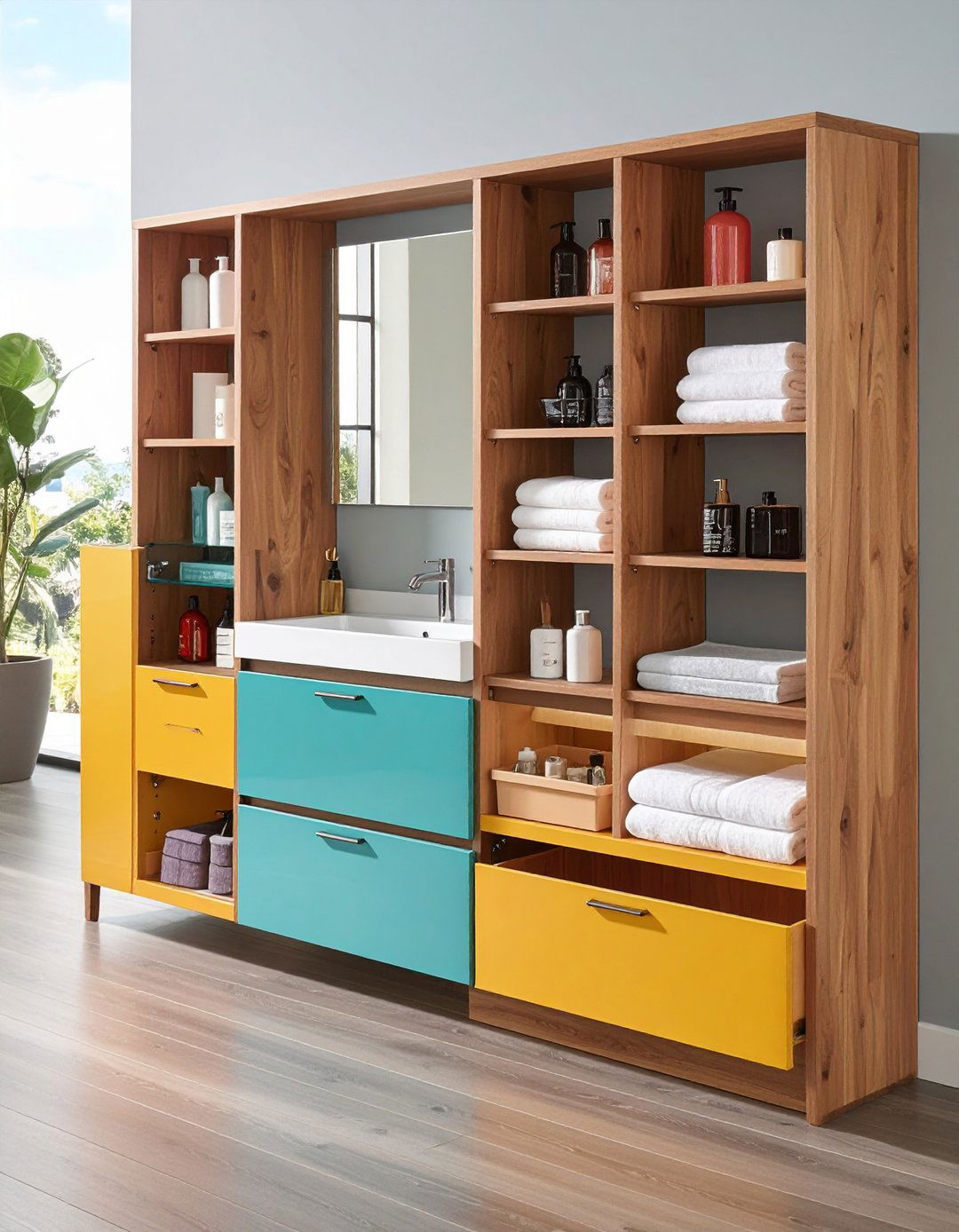

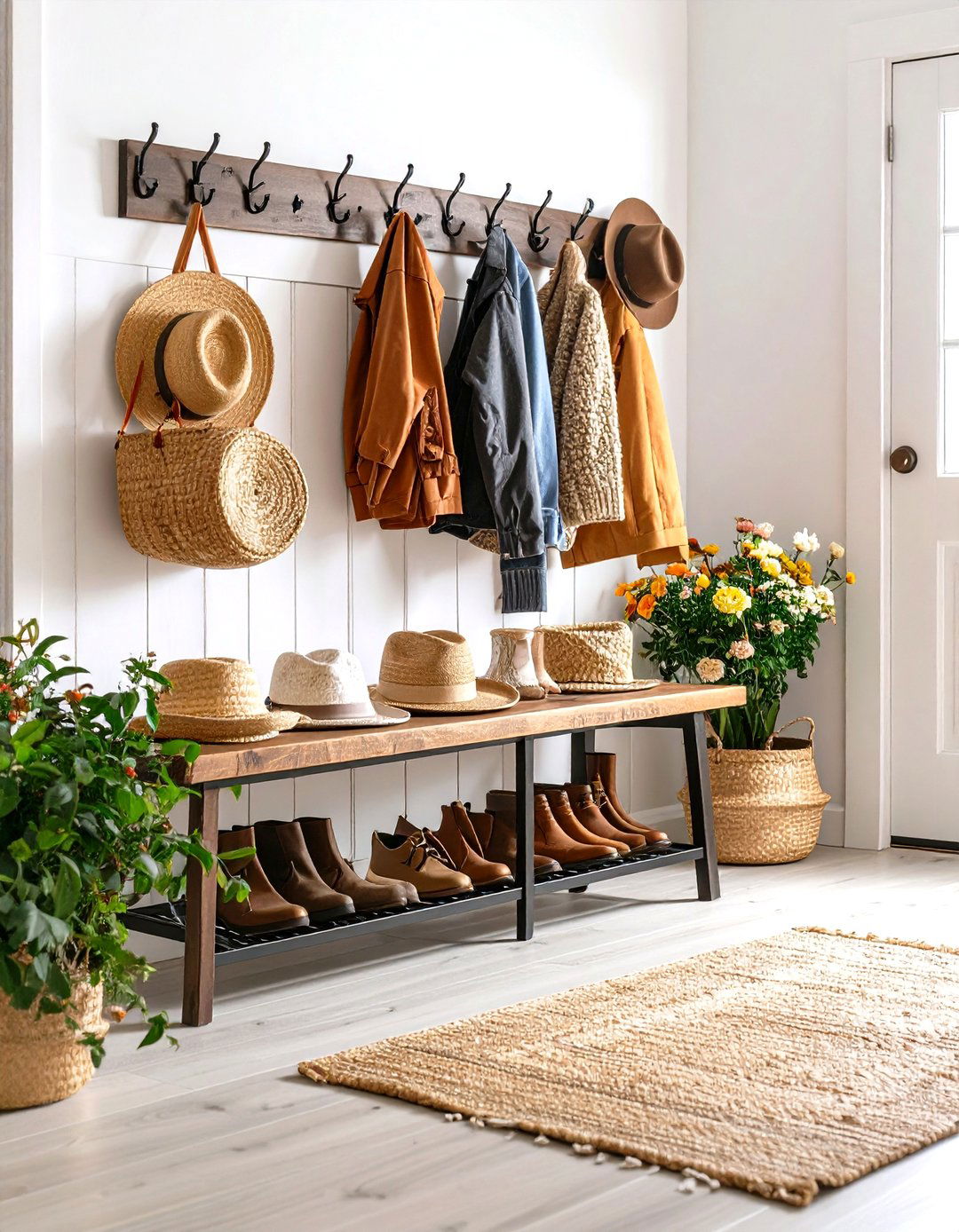
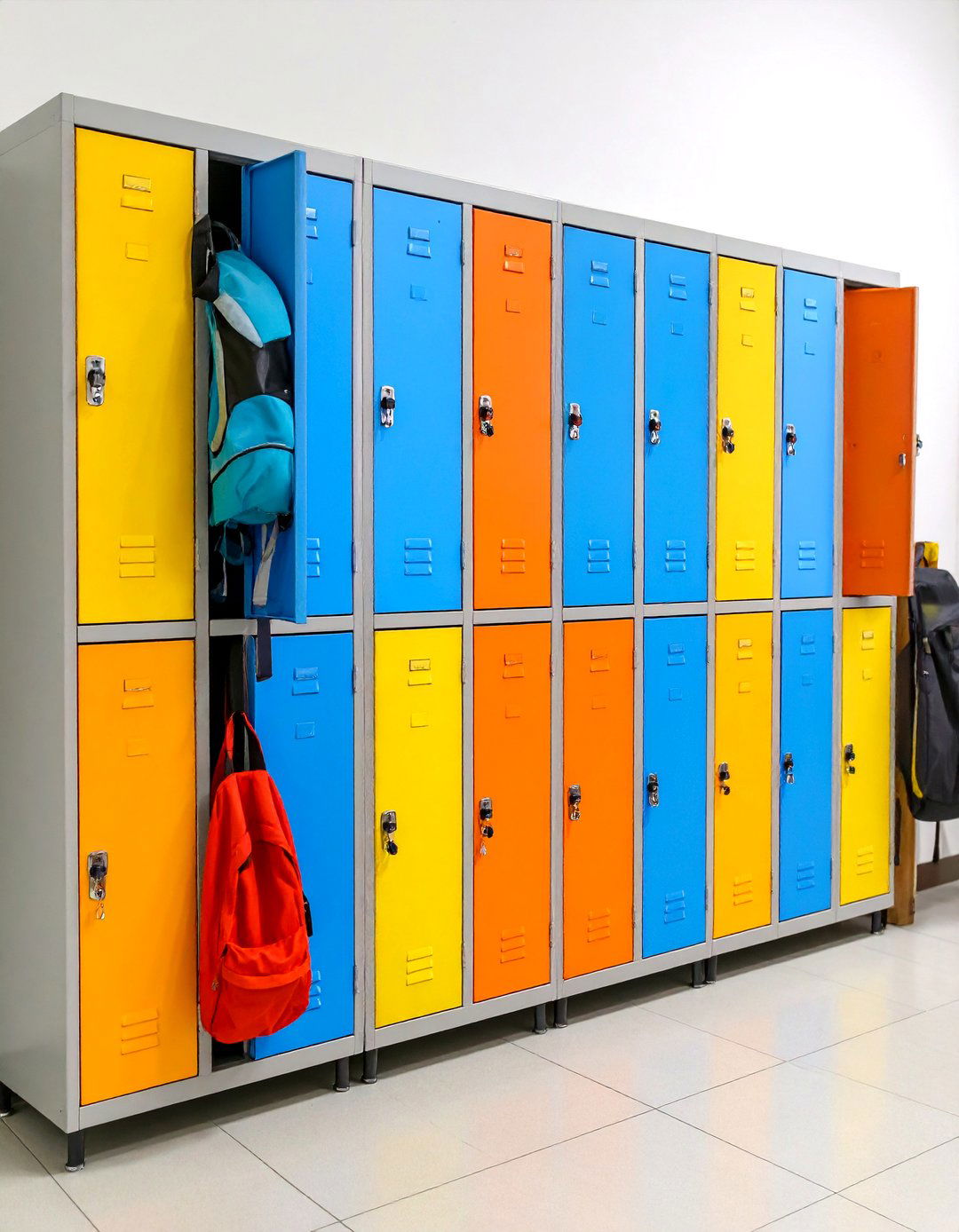

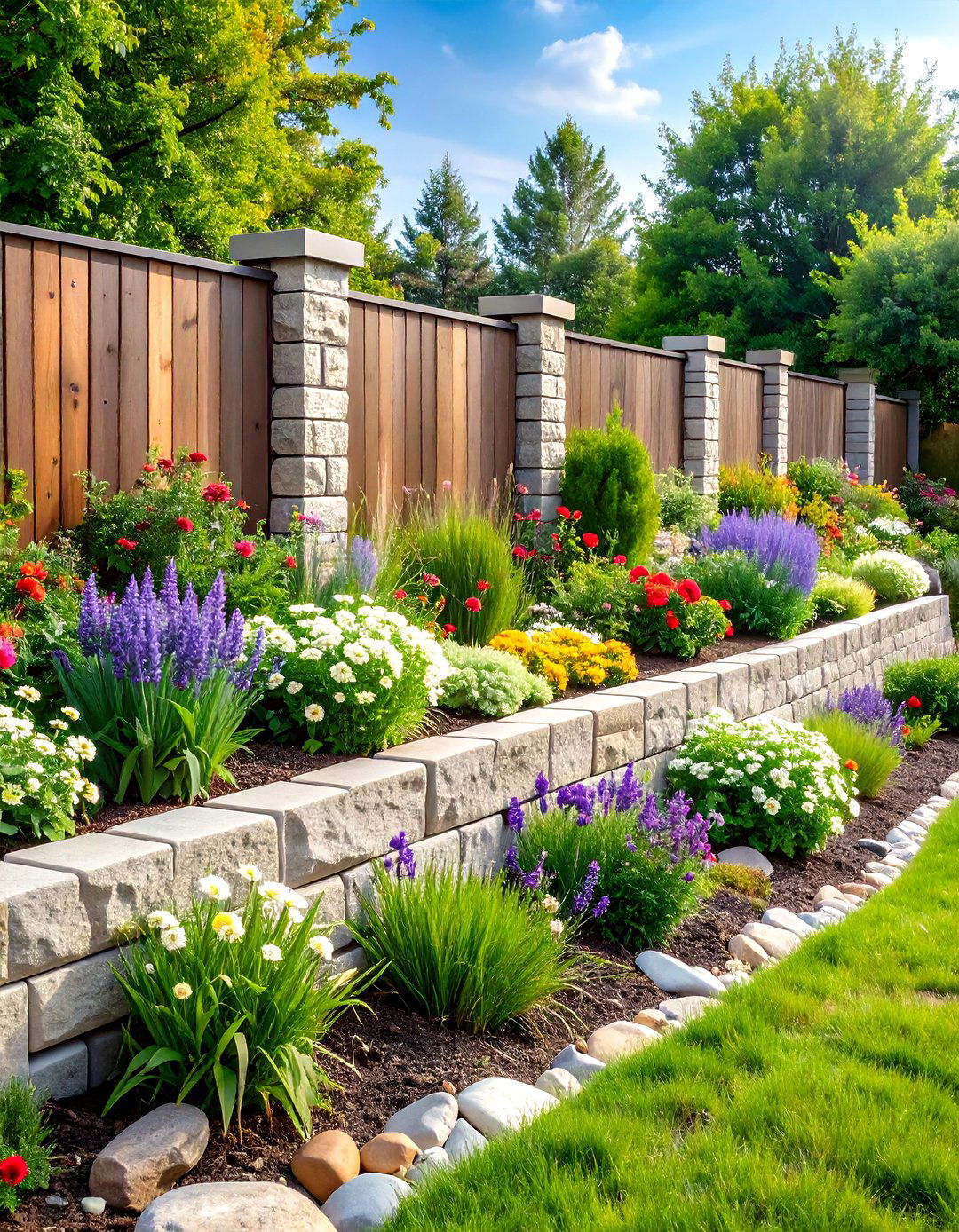
Leave a Reply